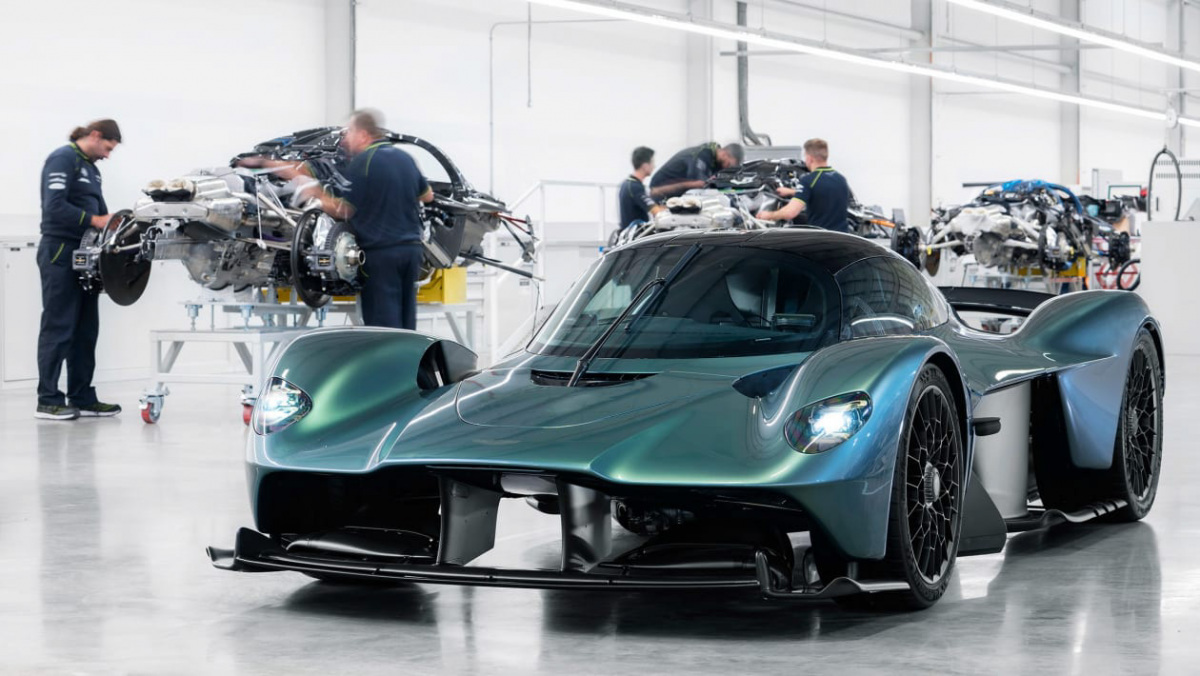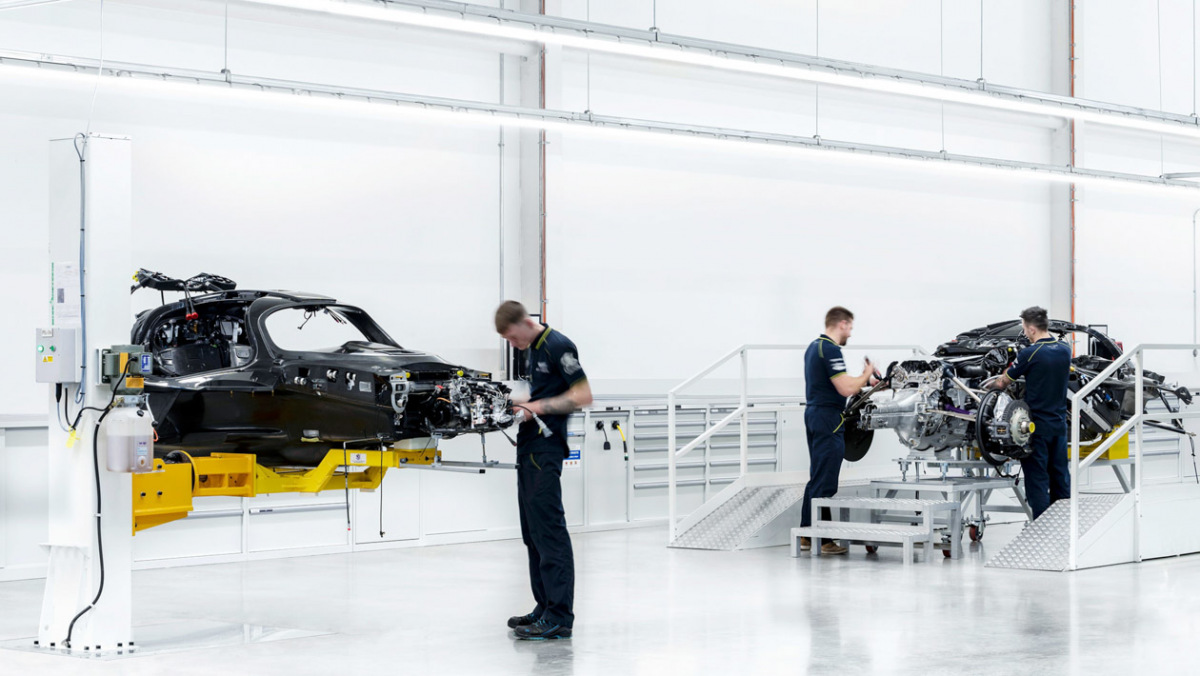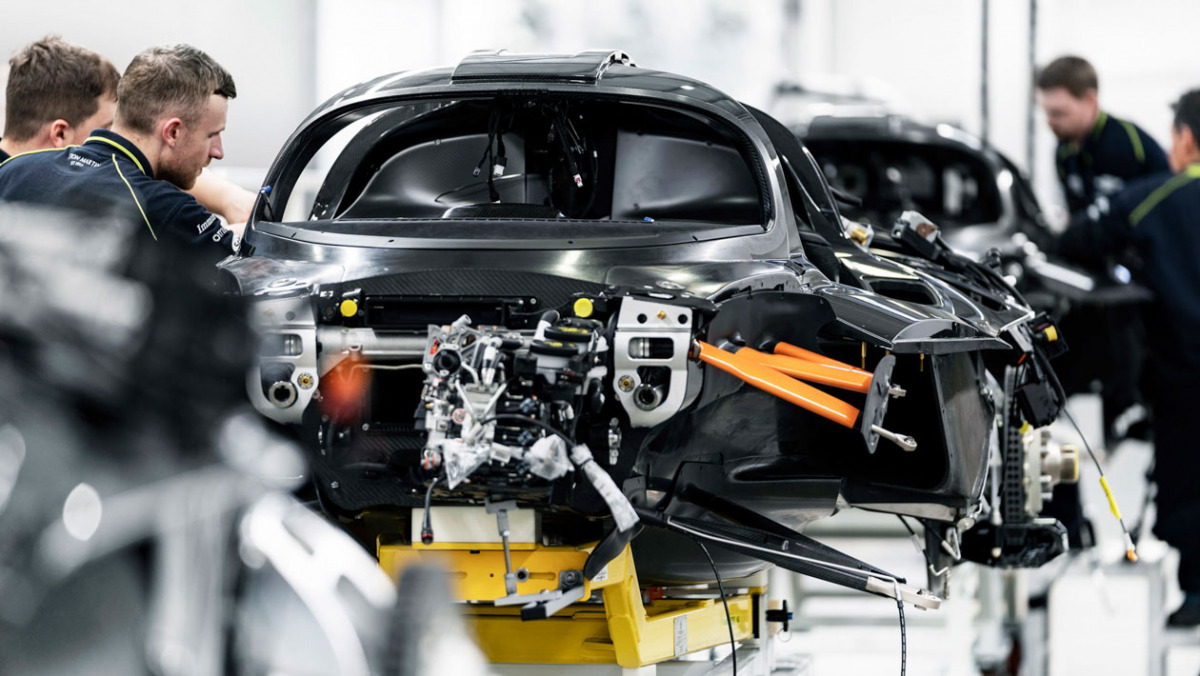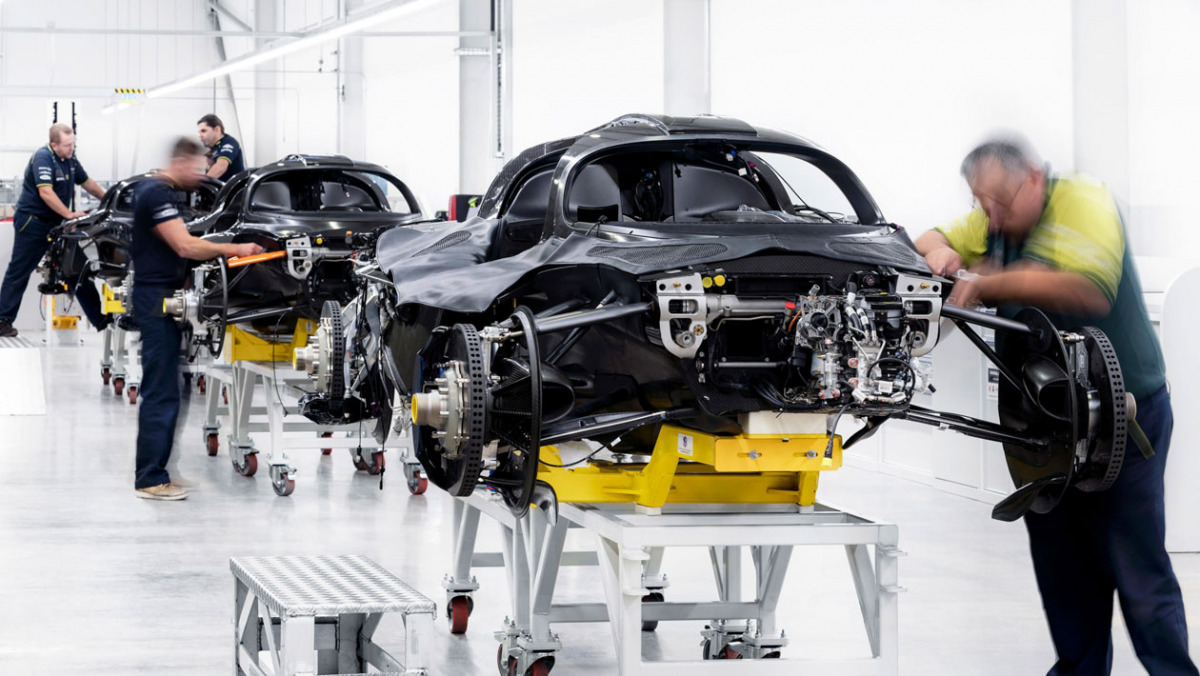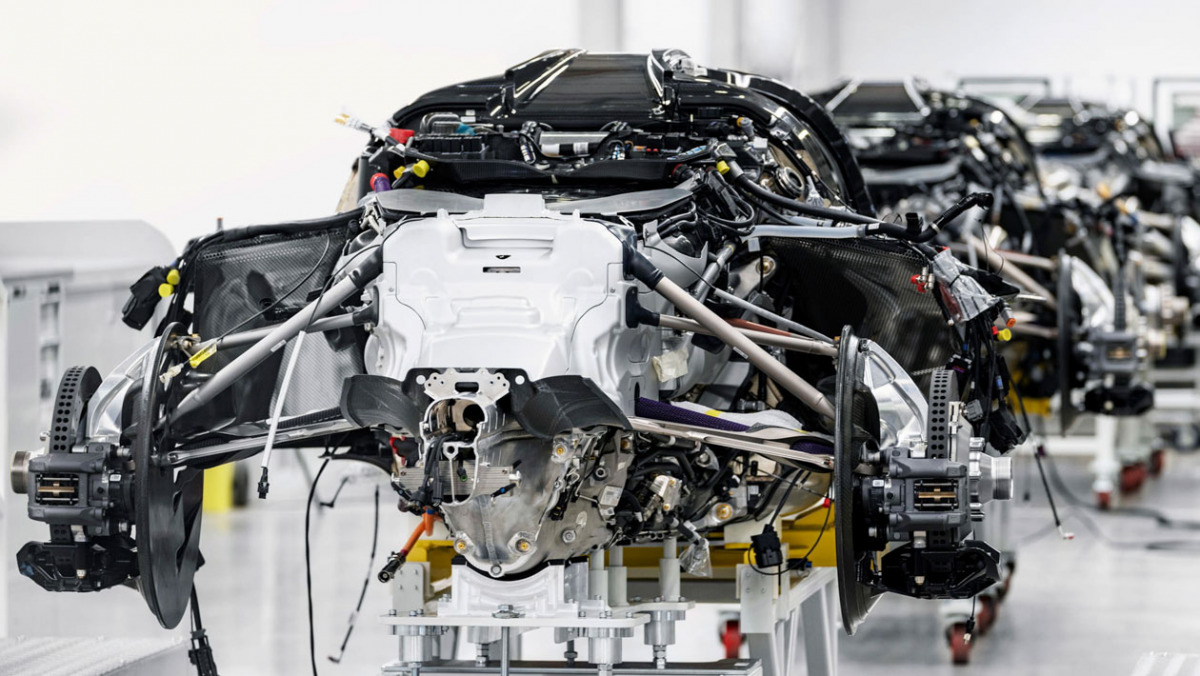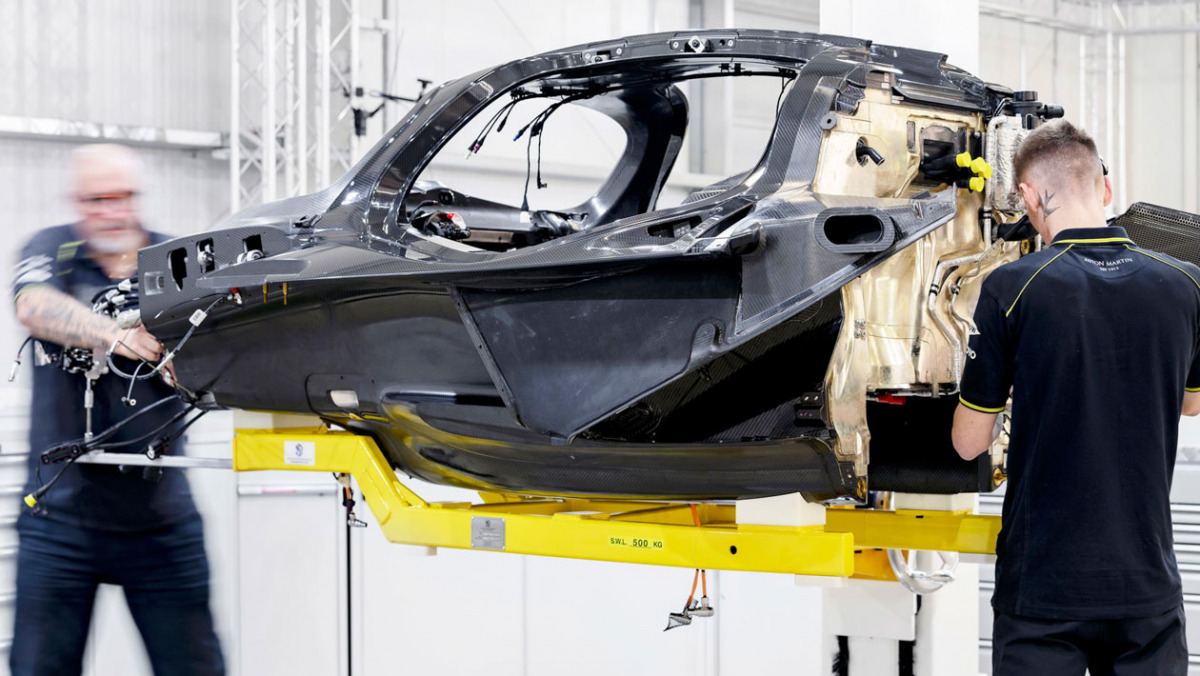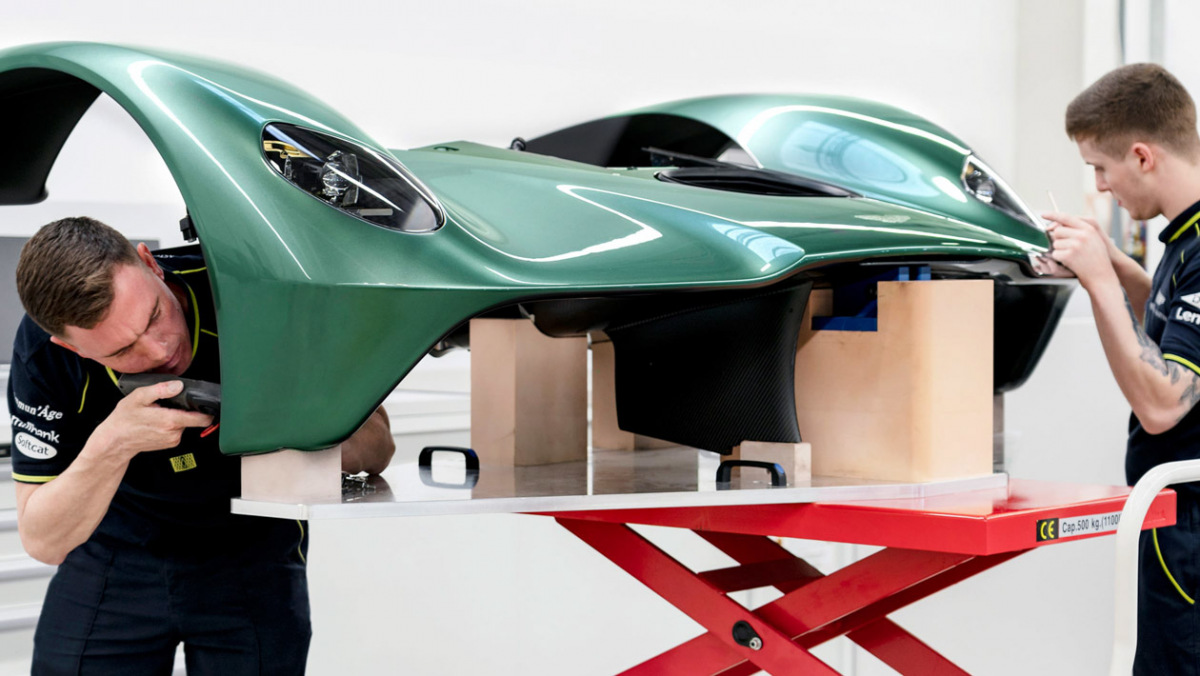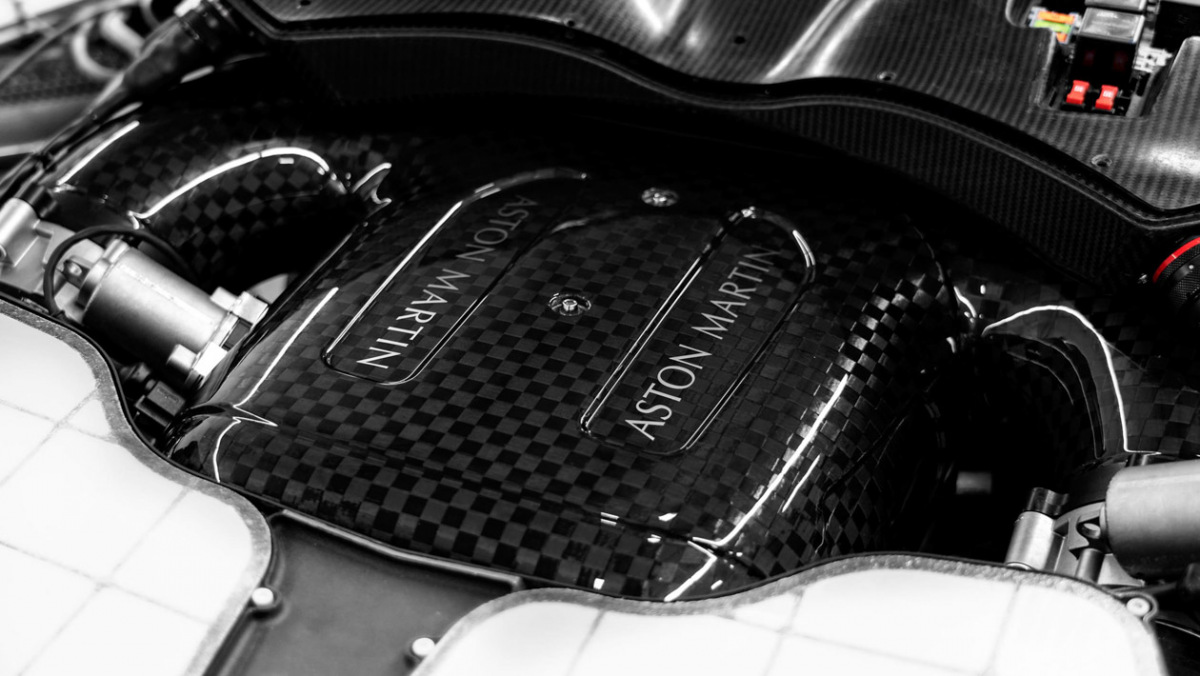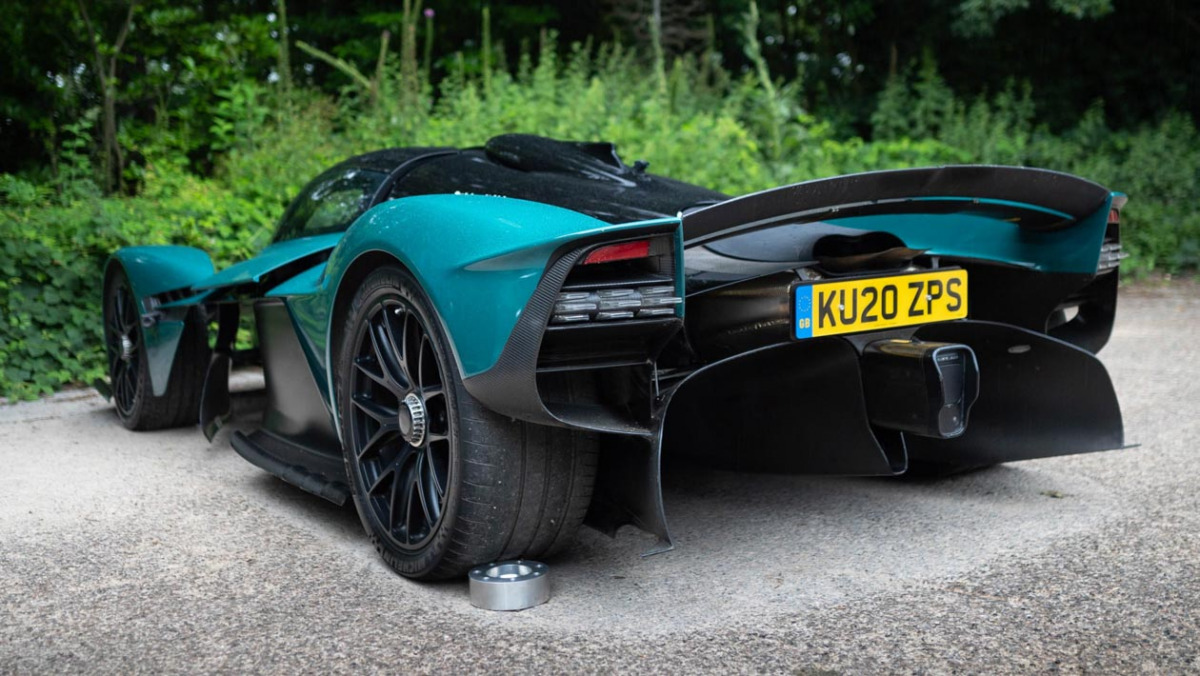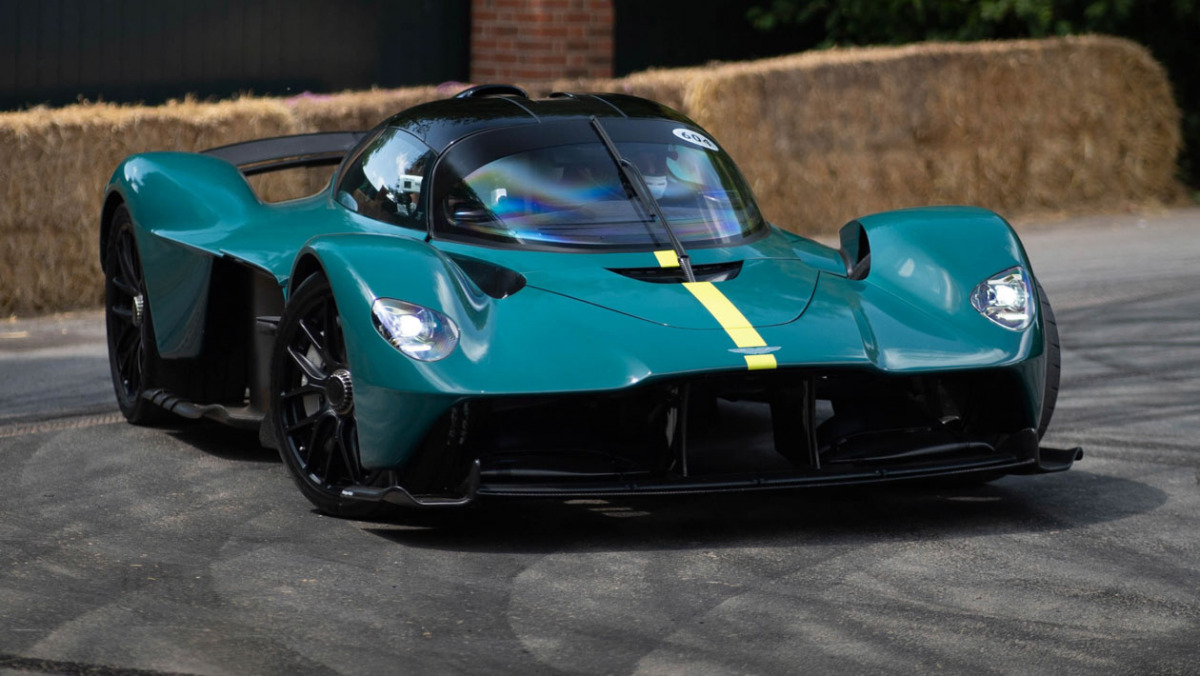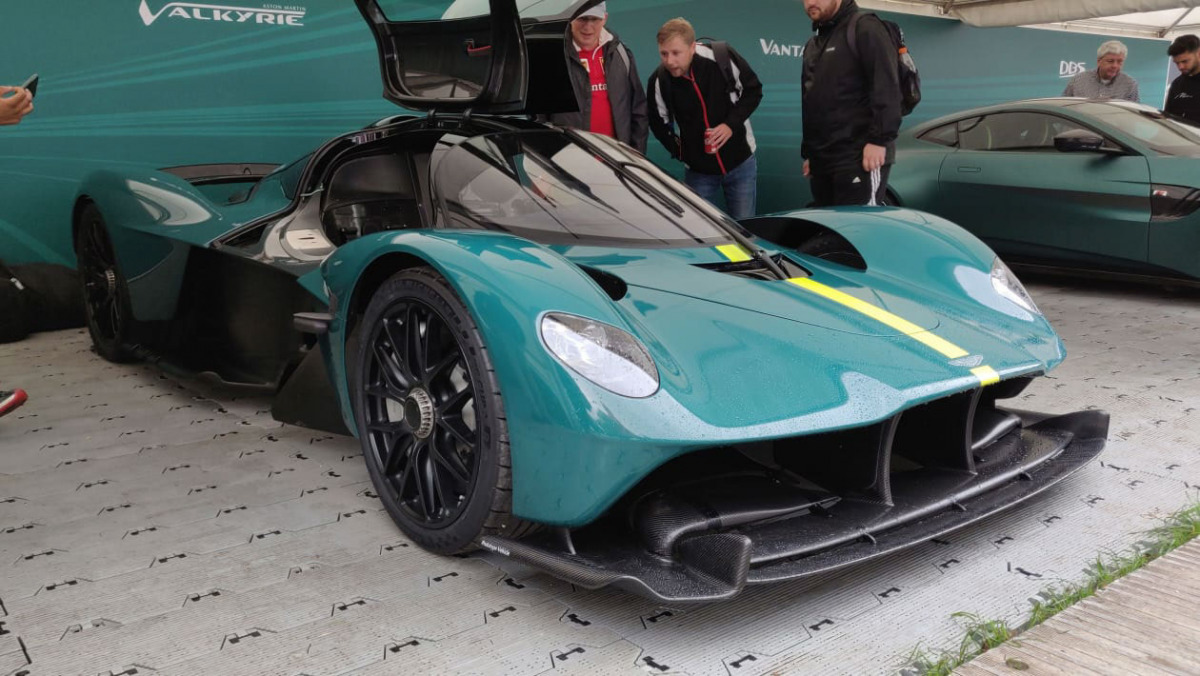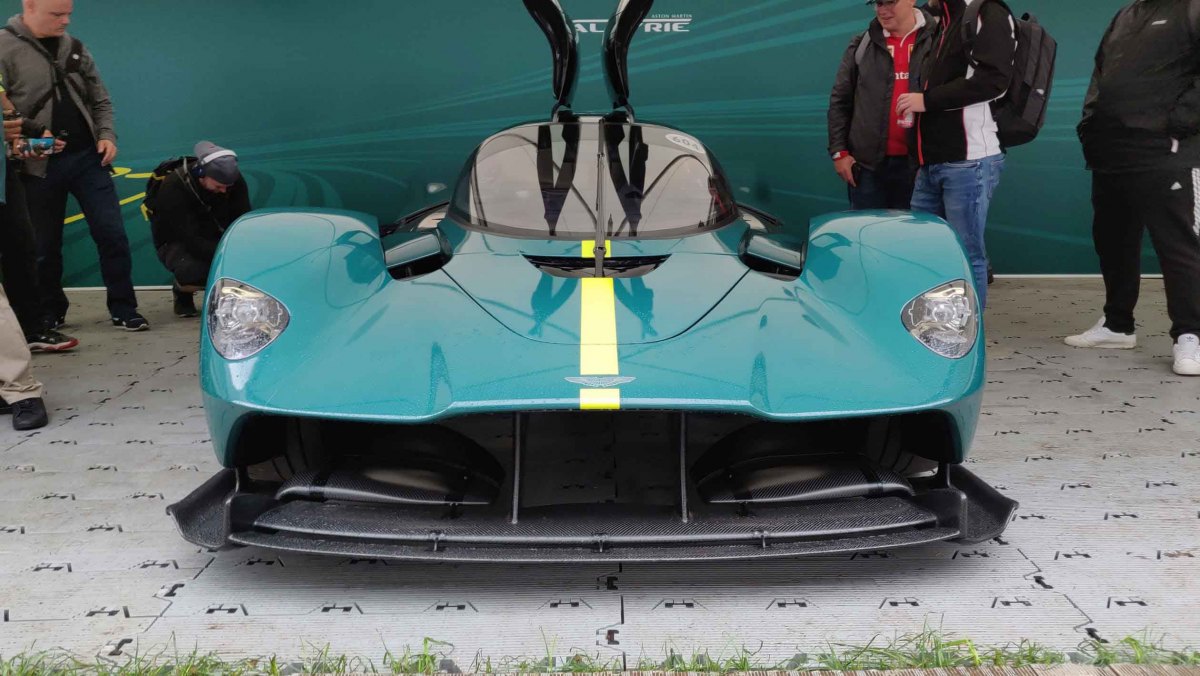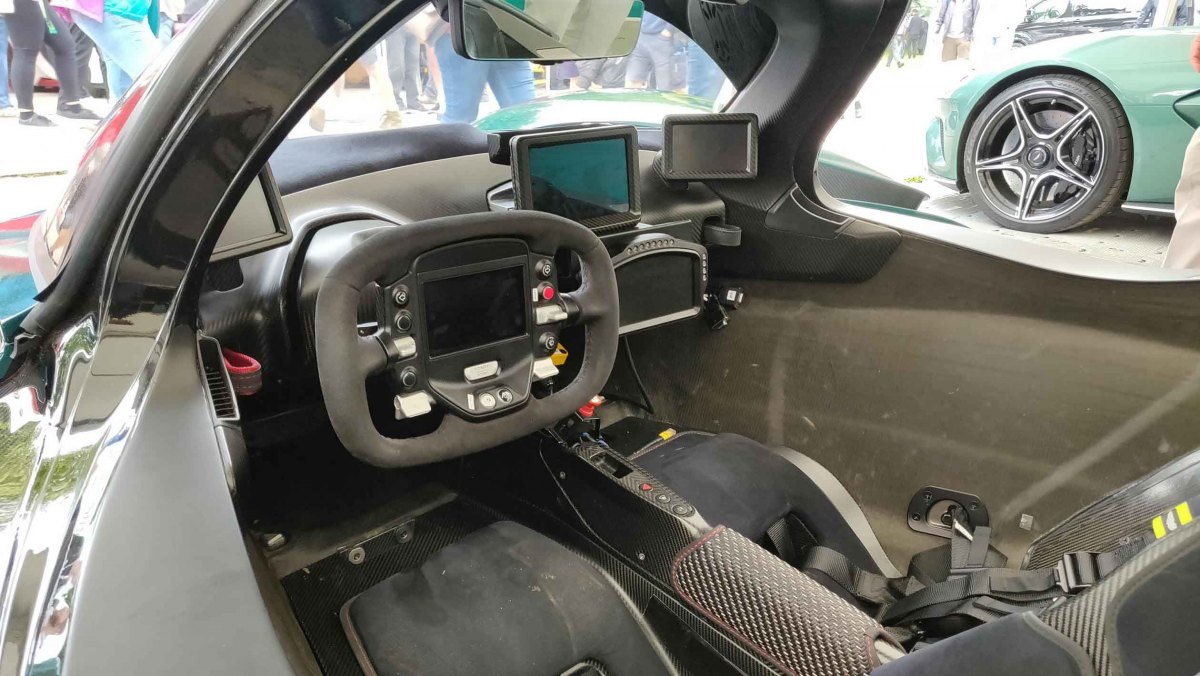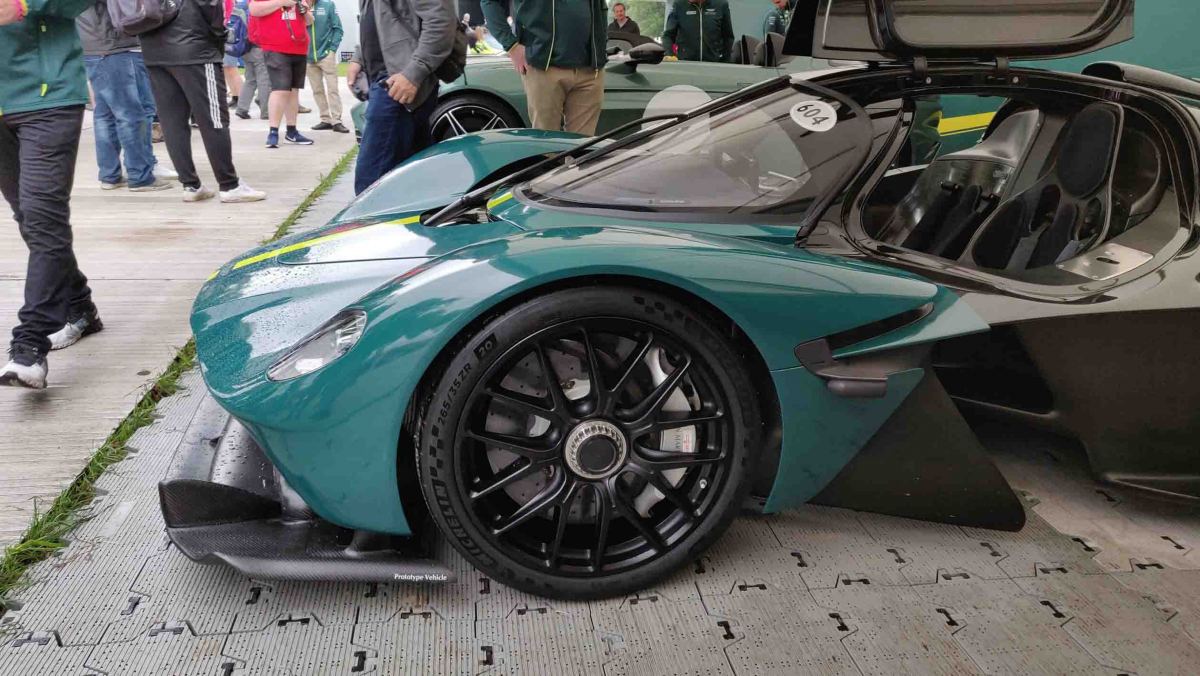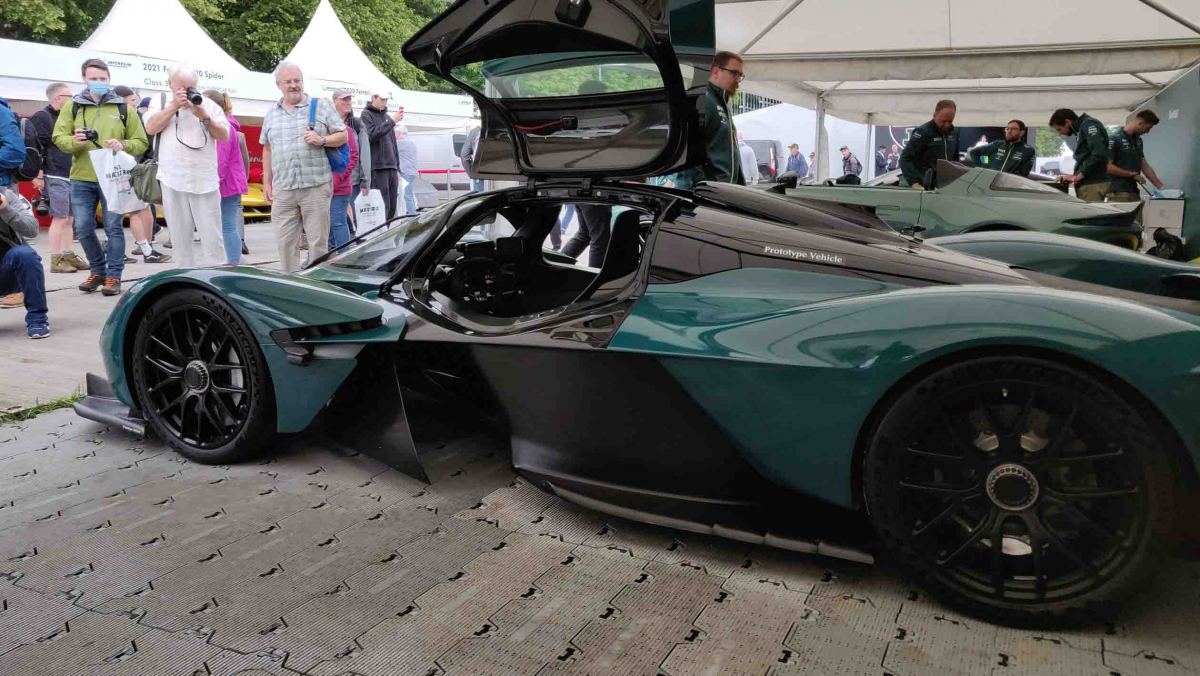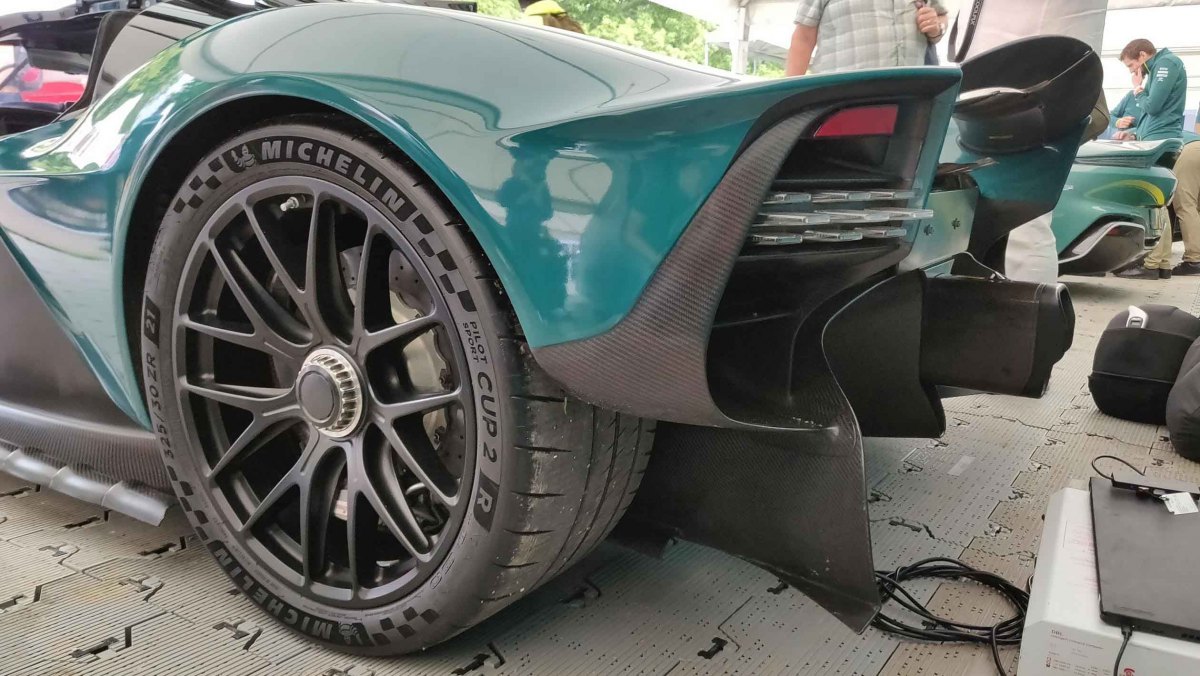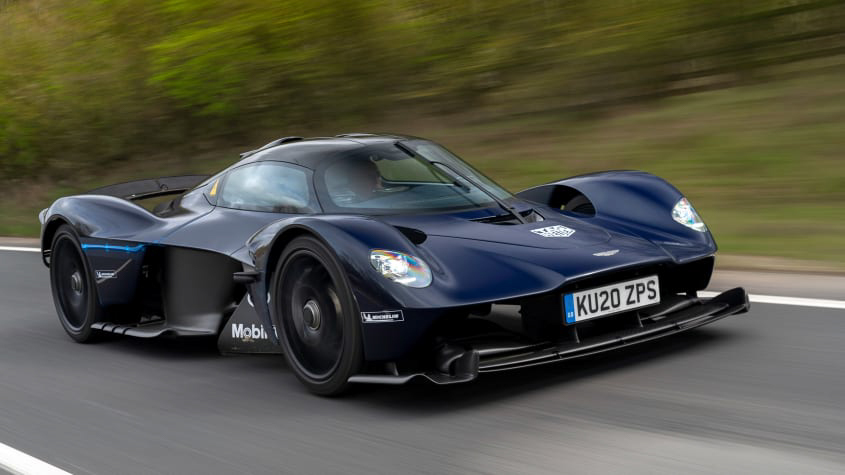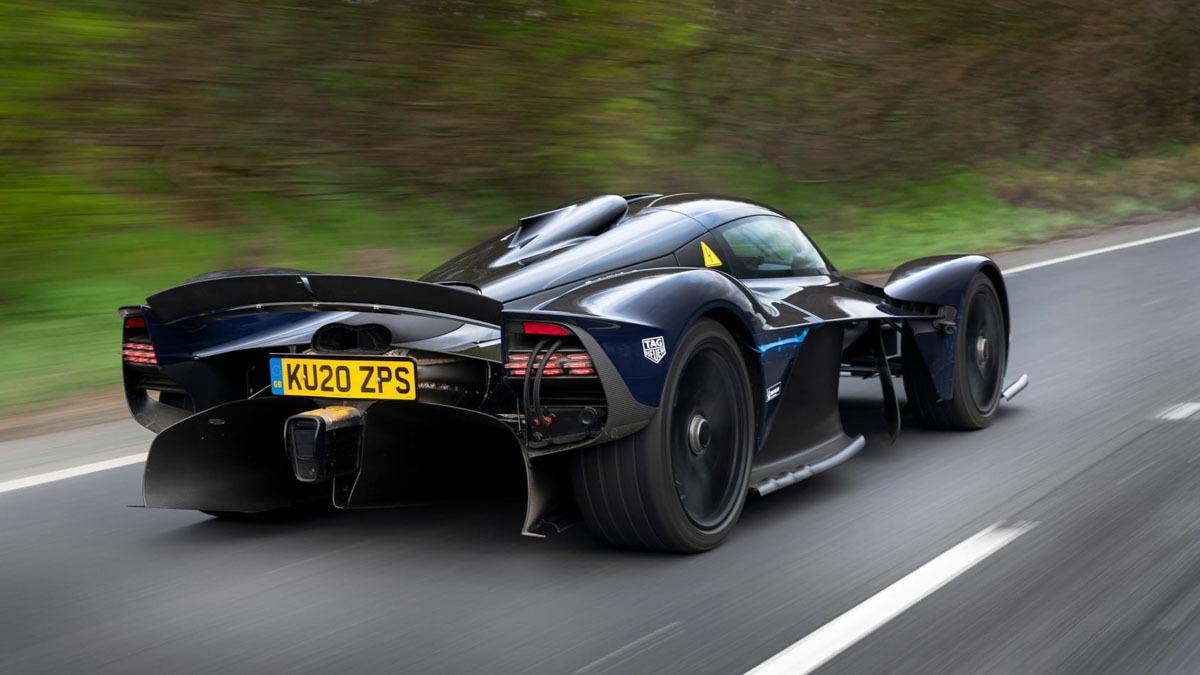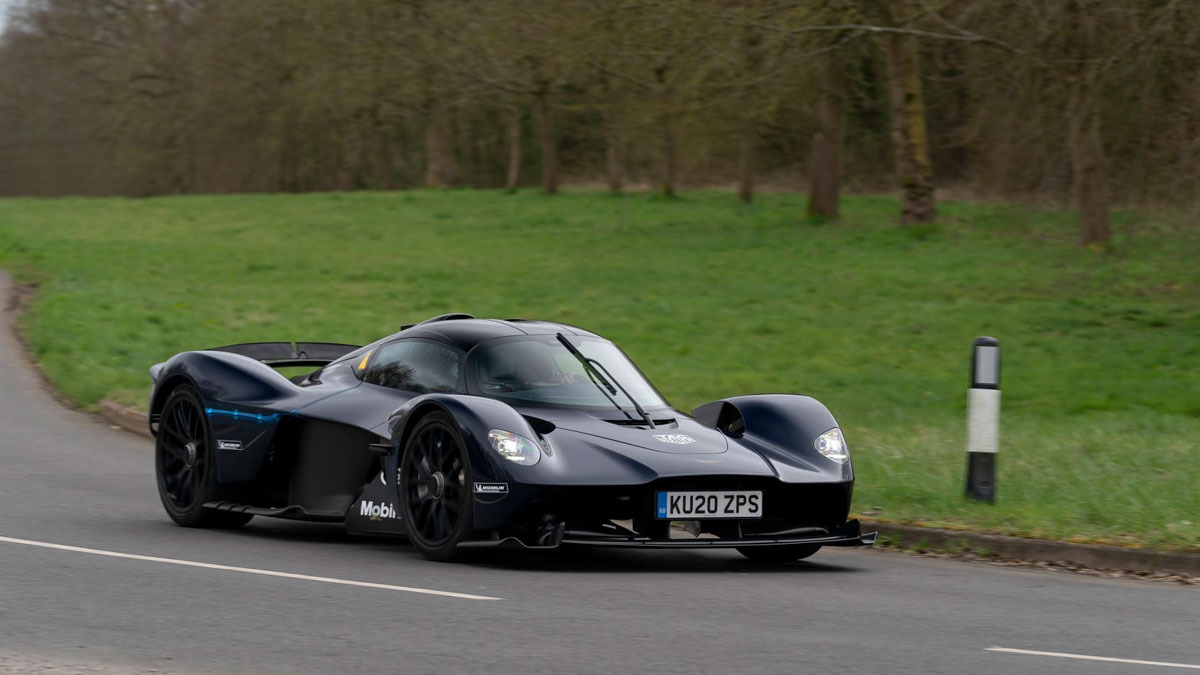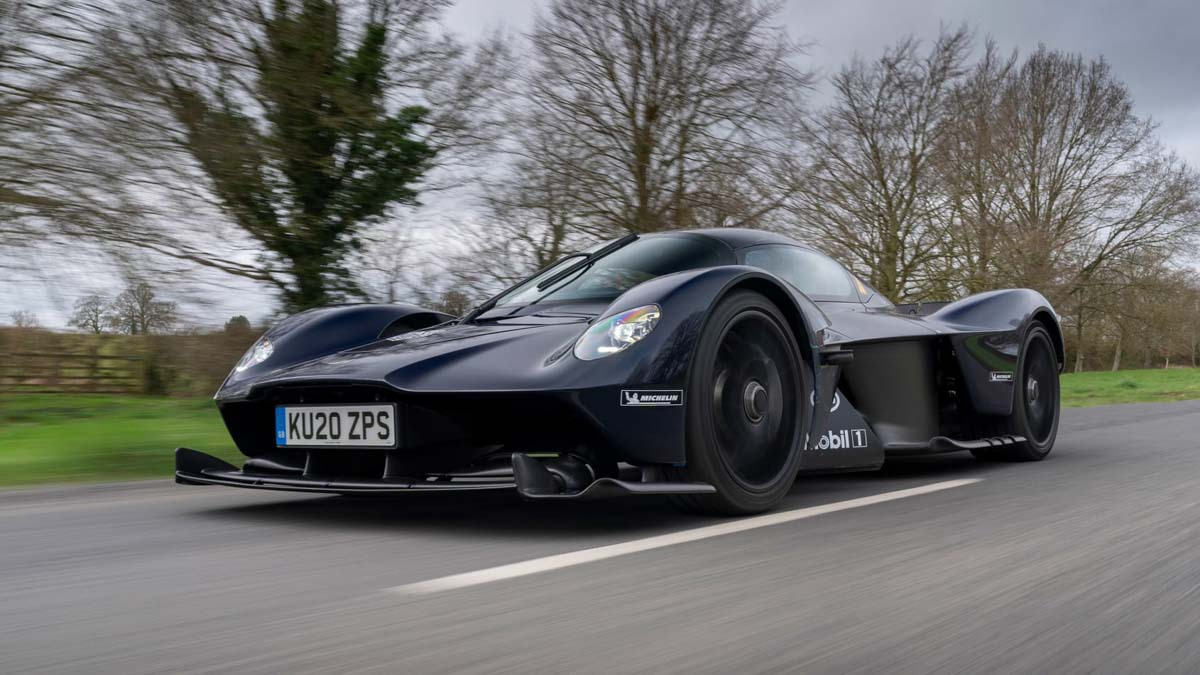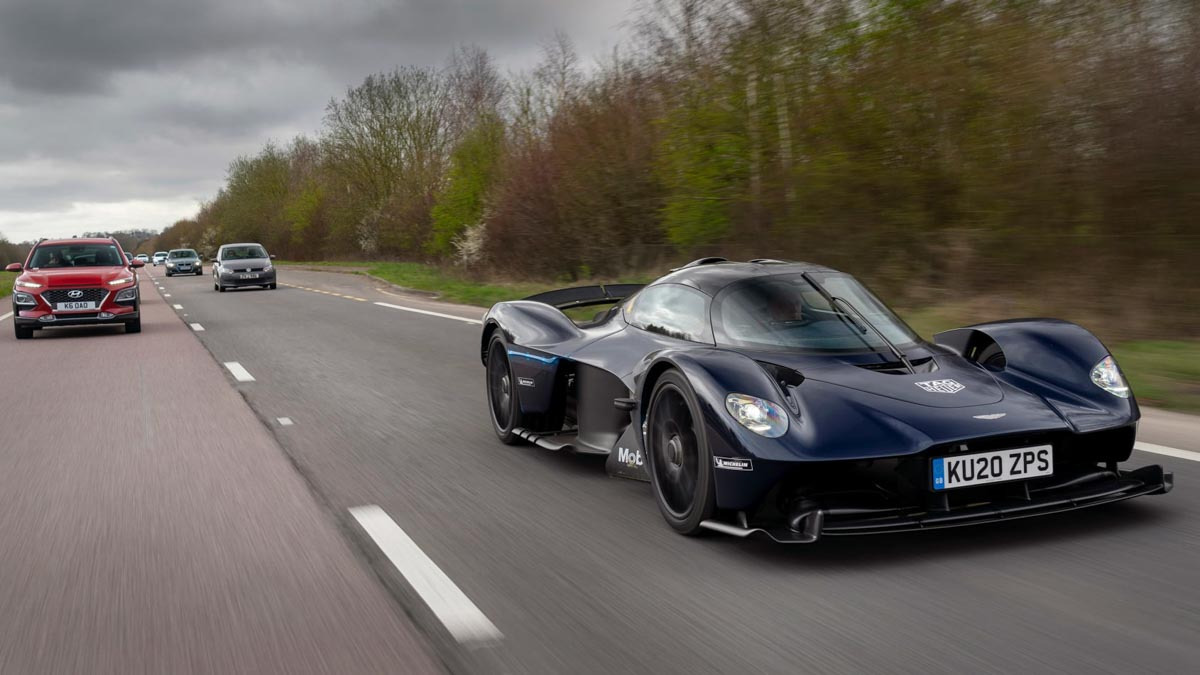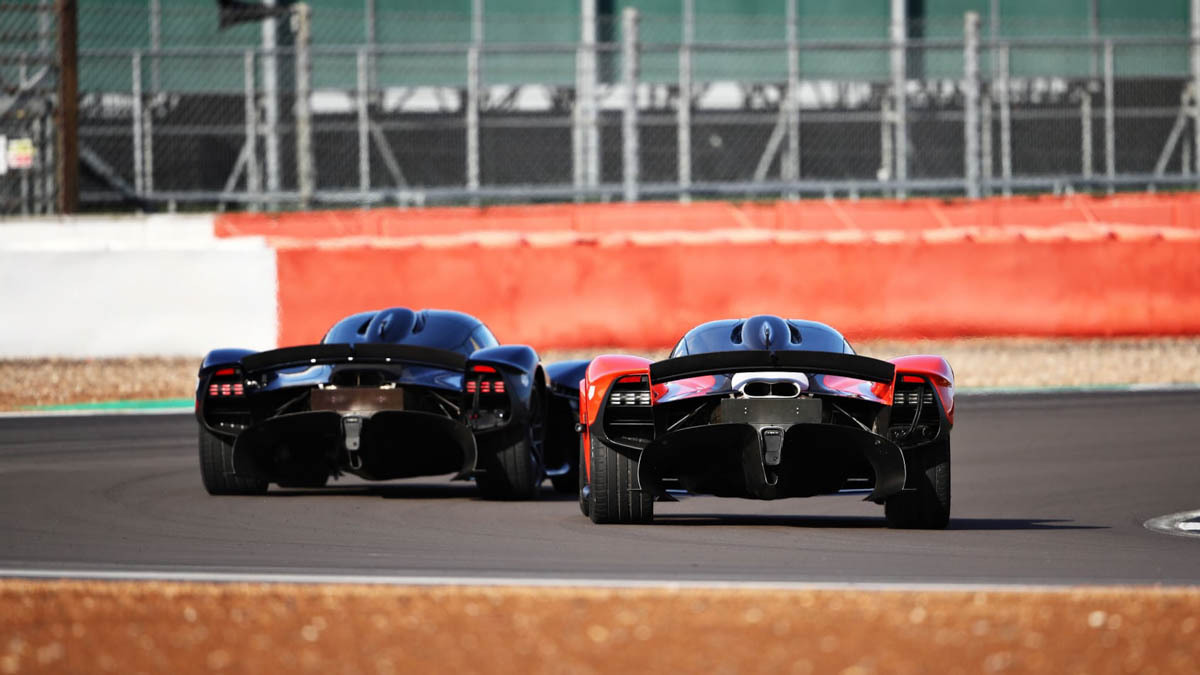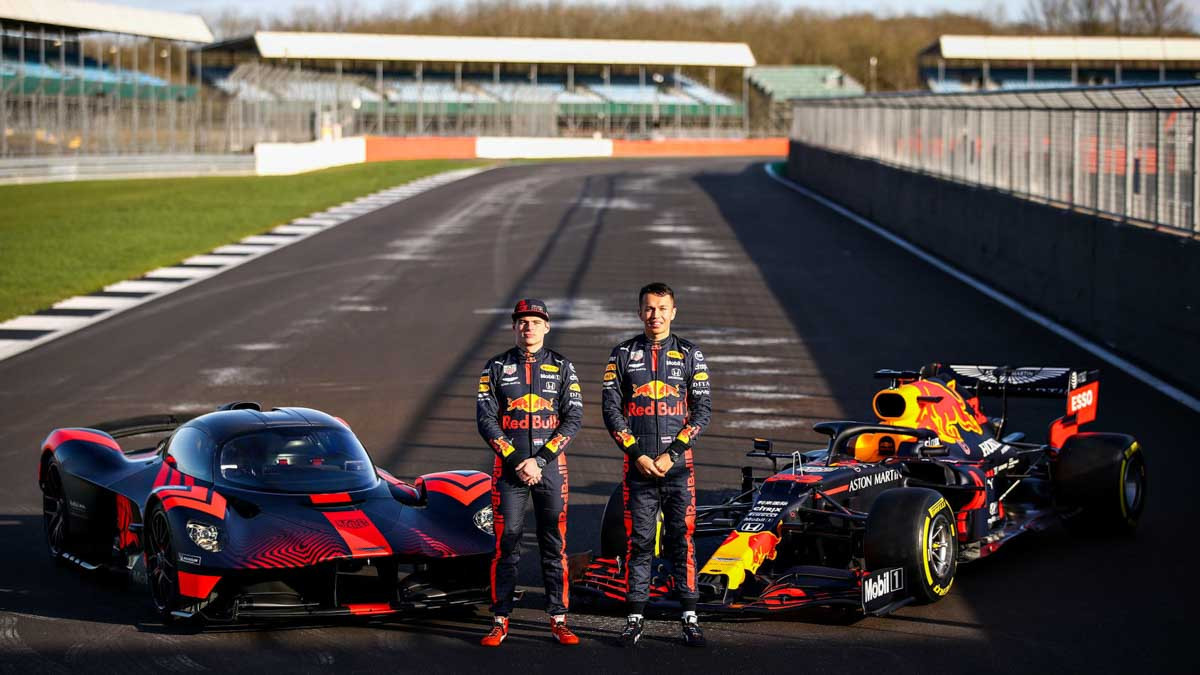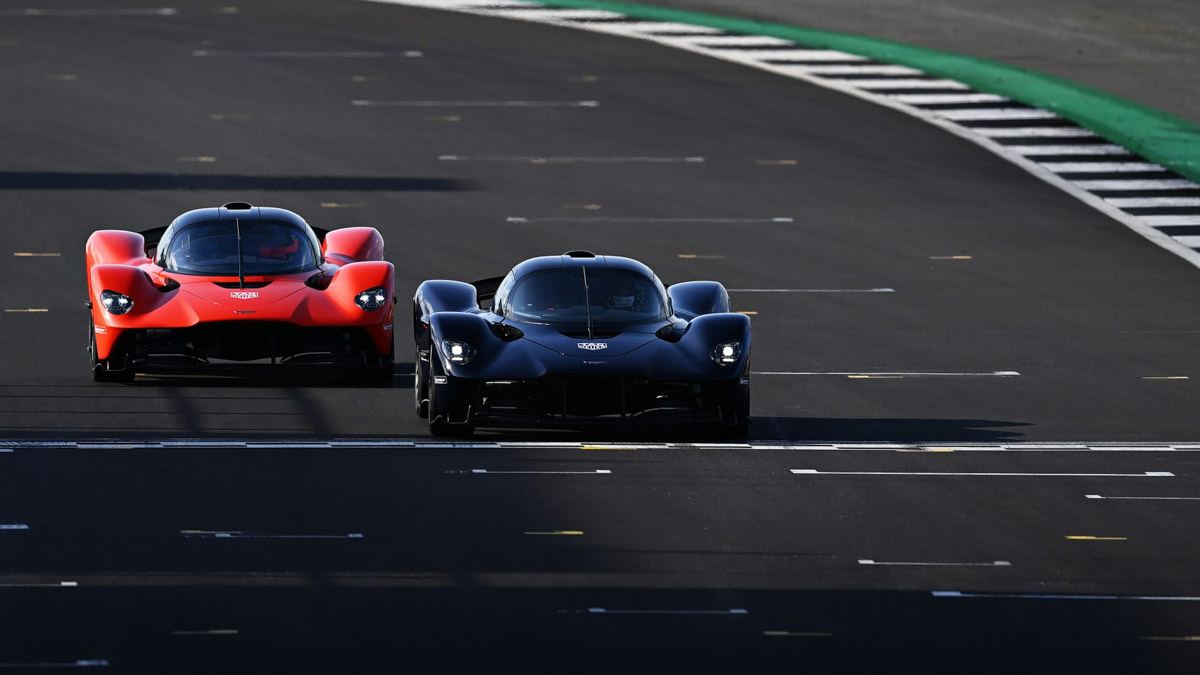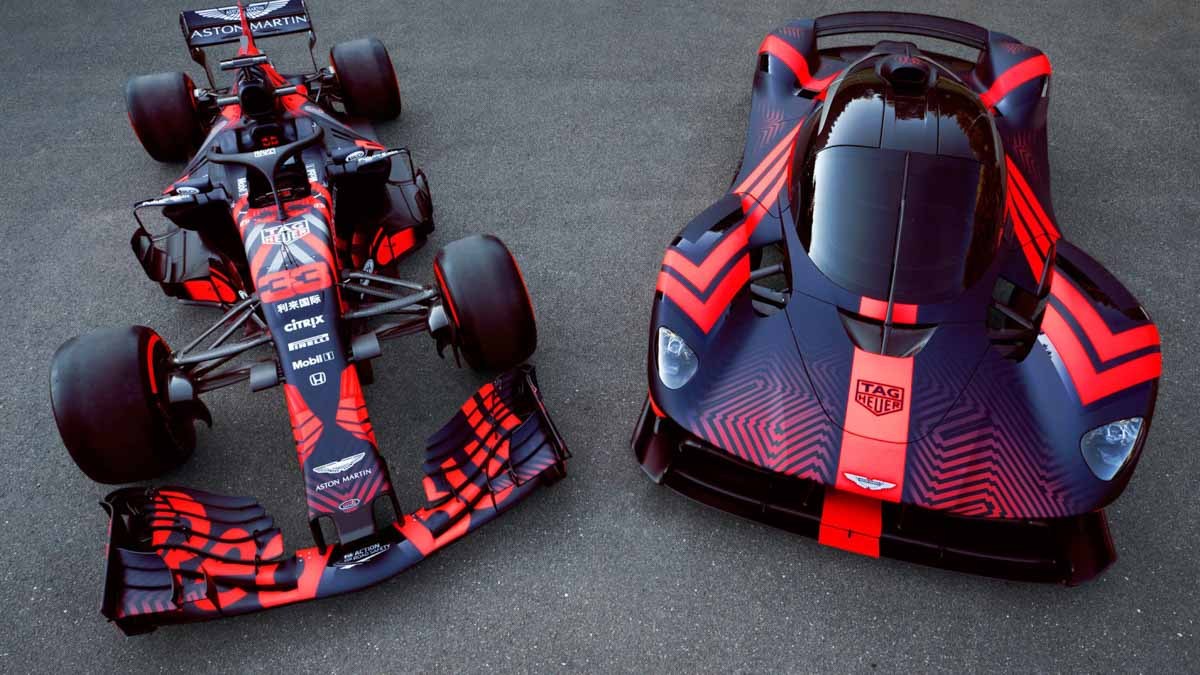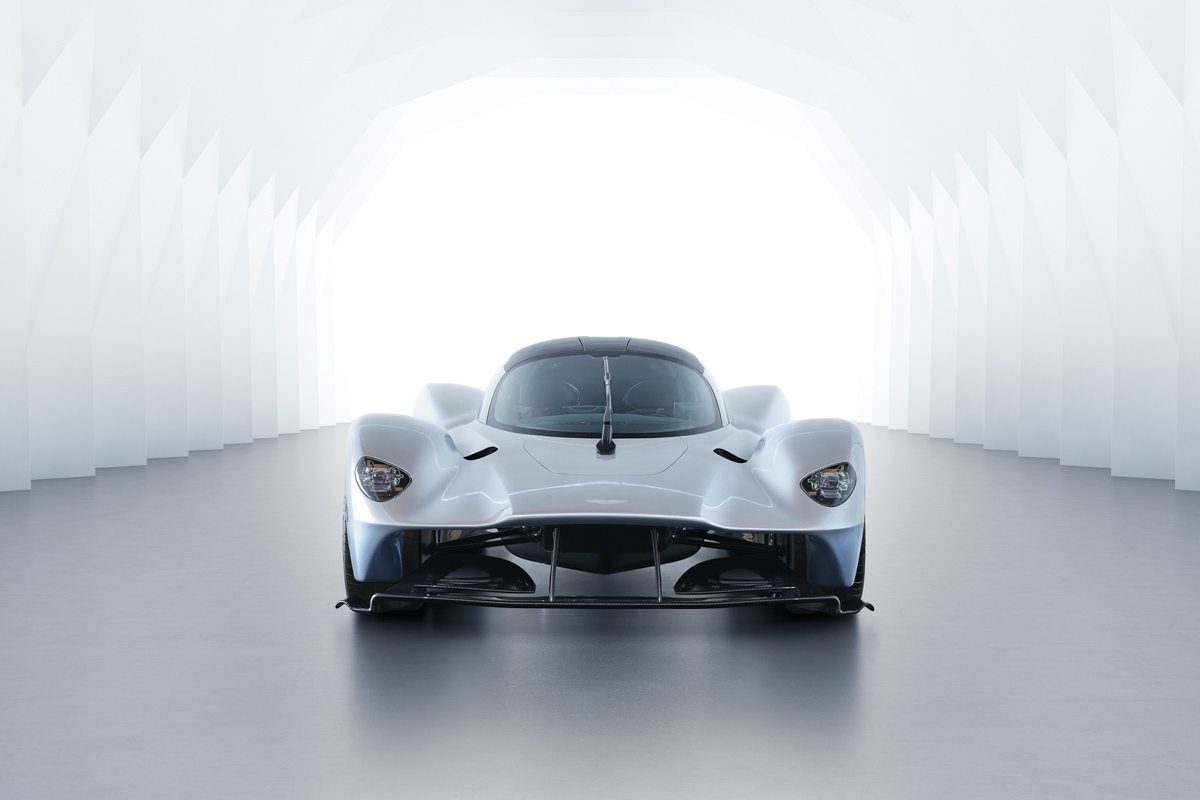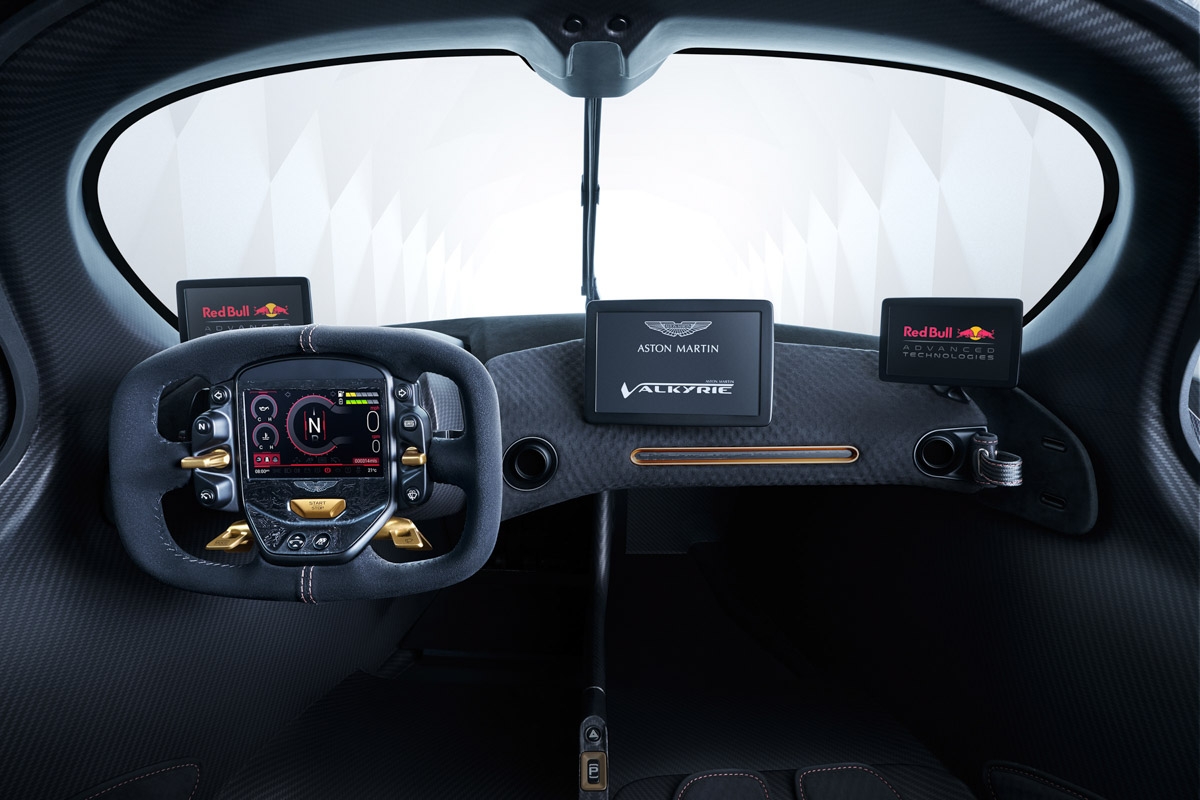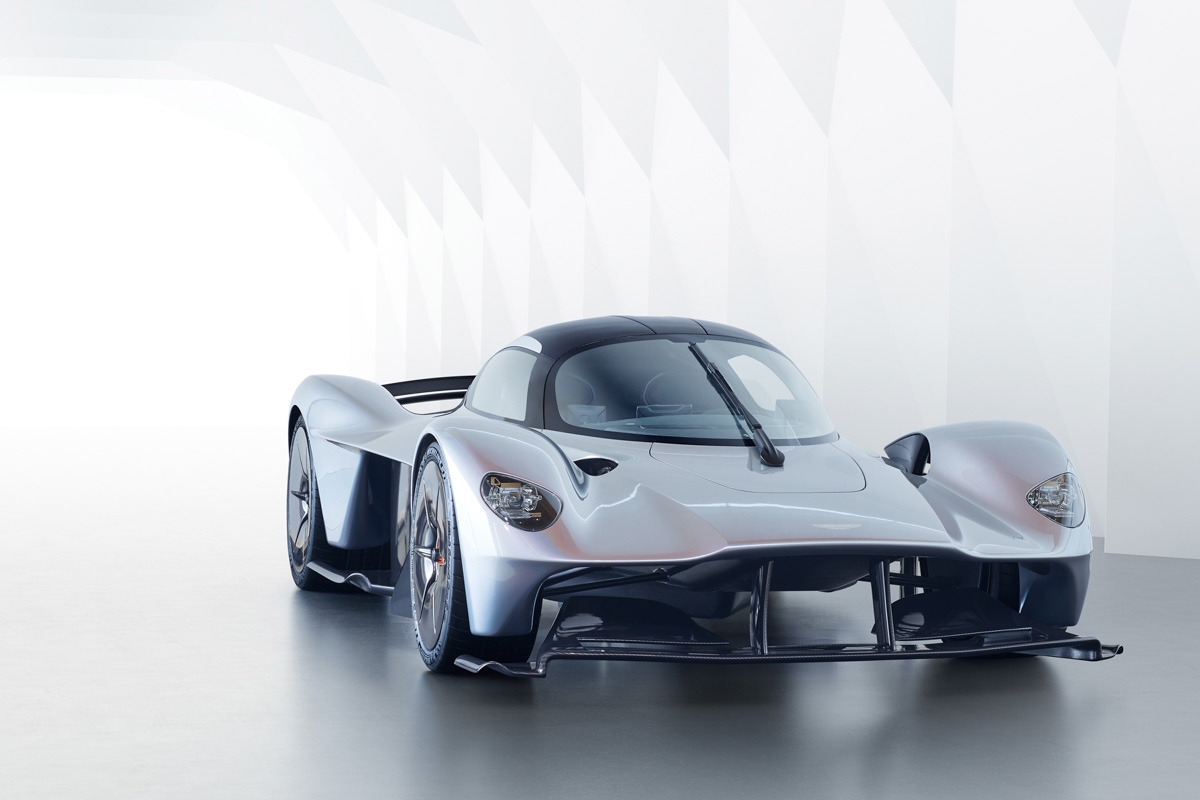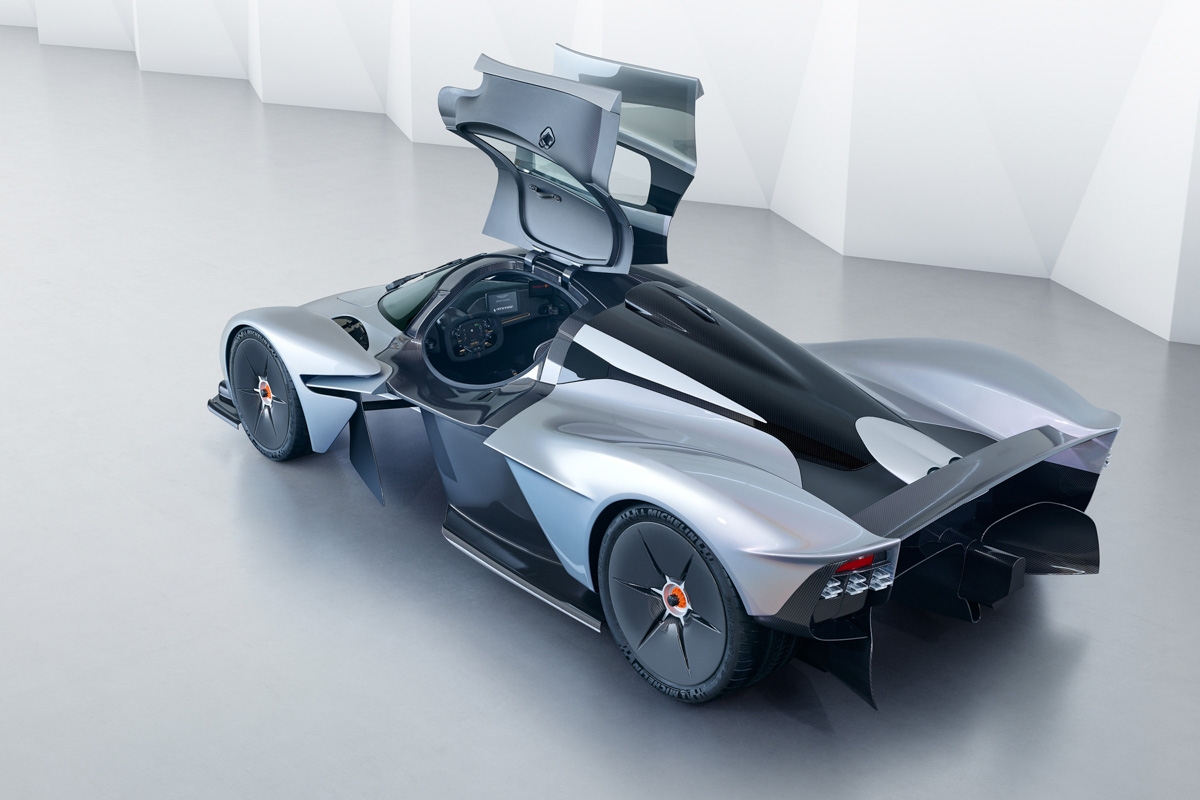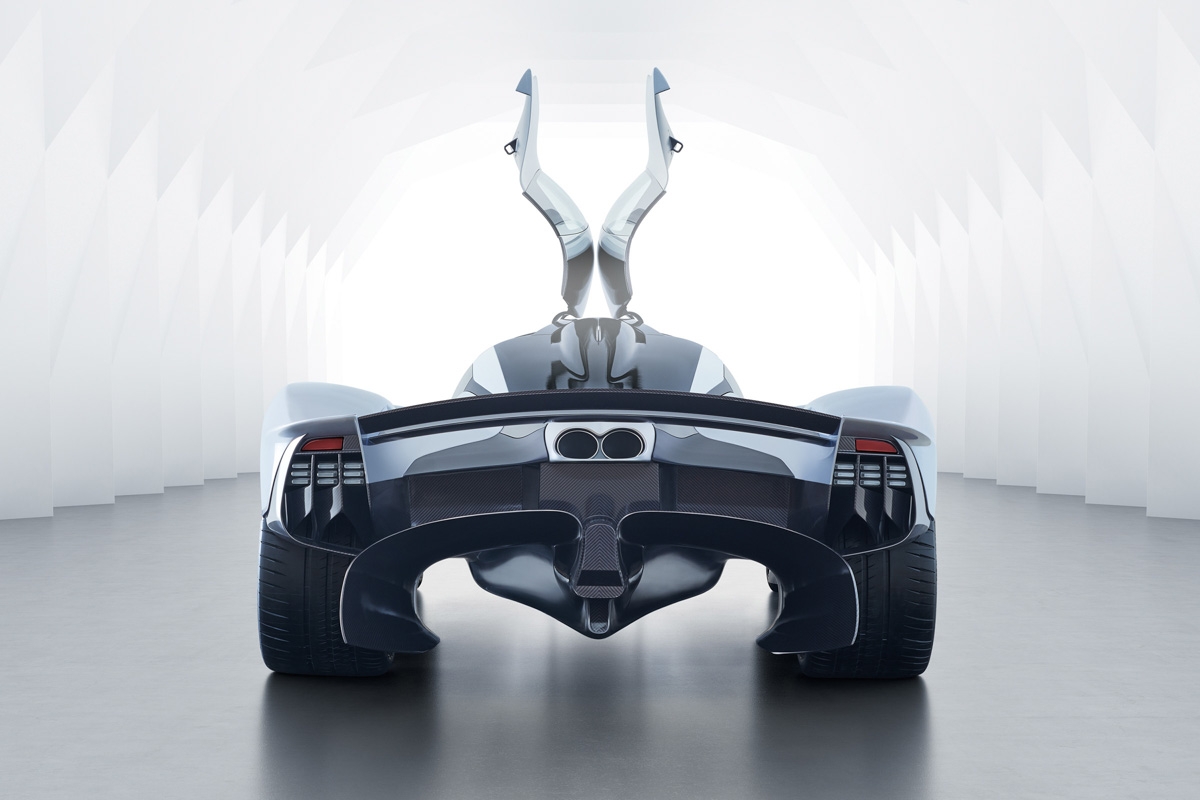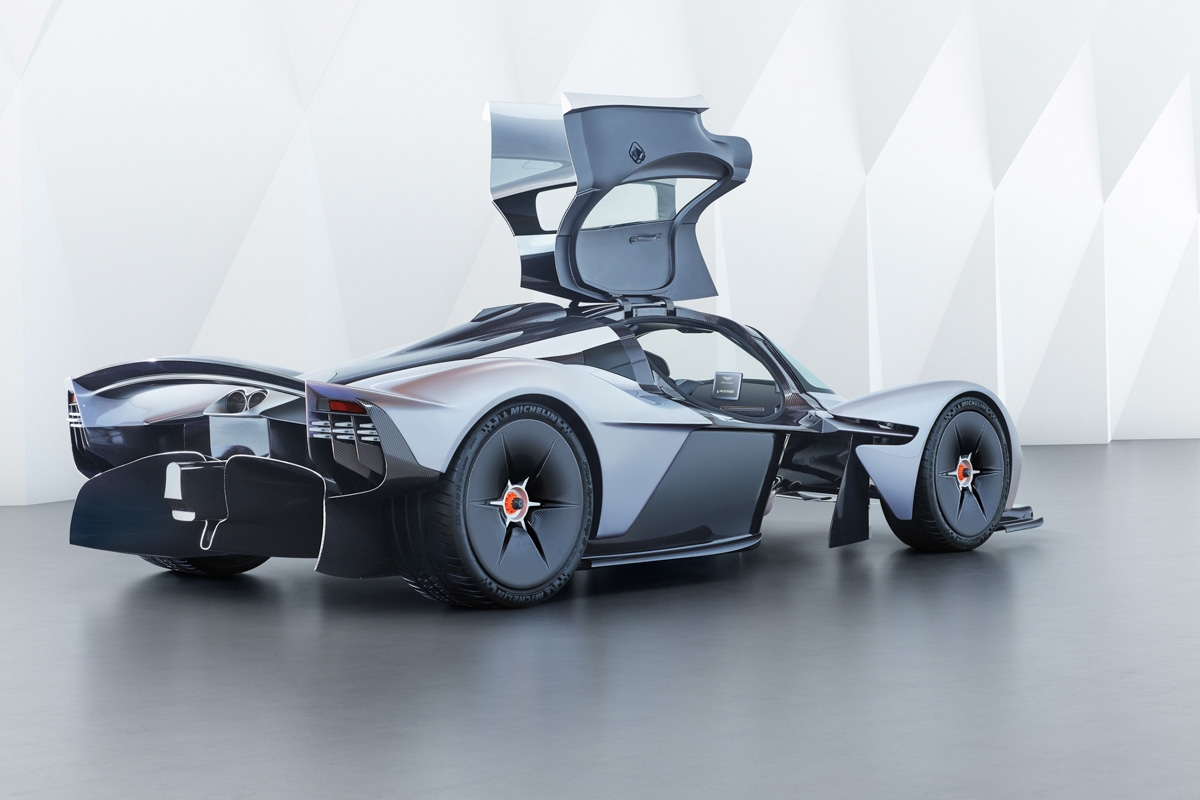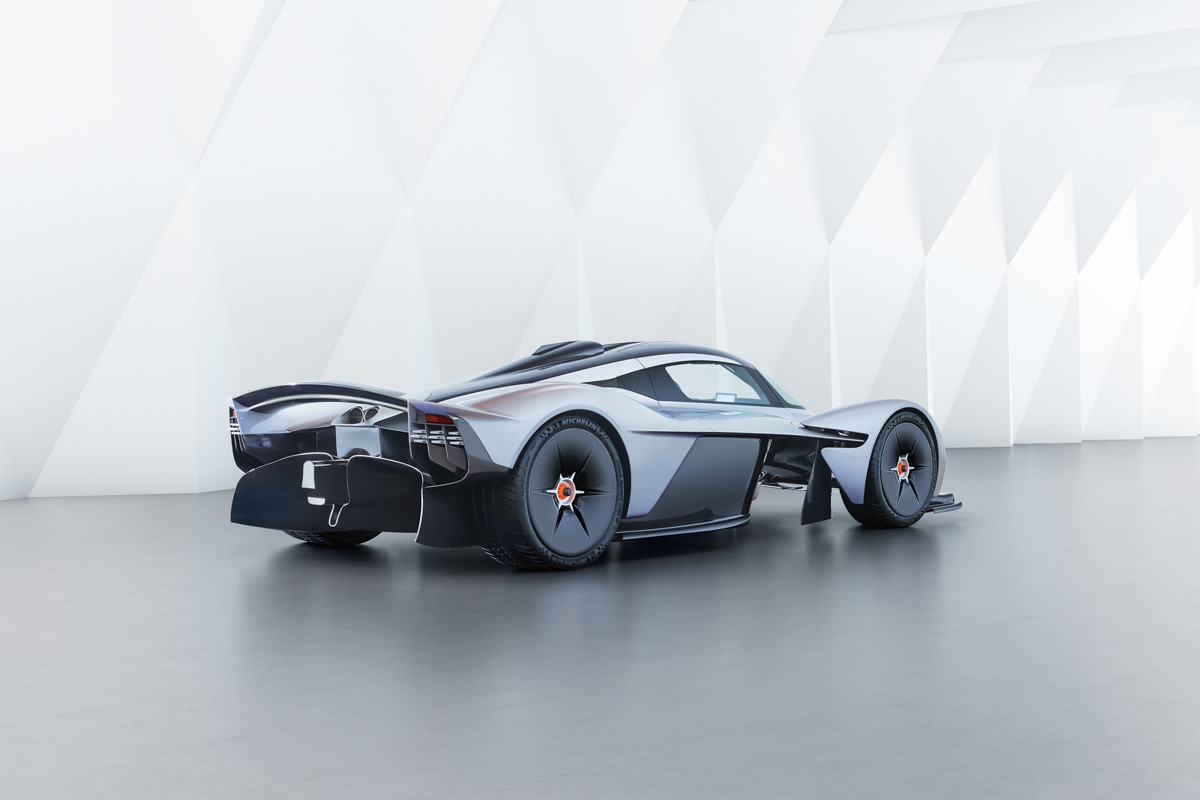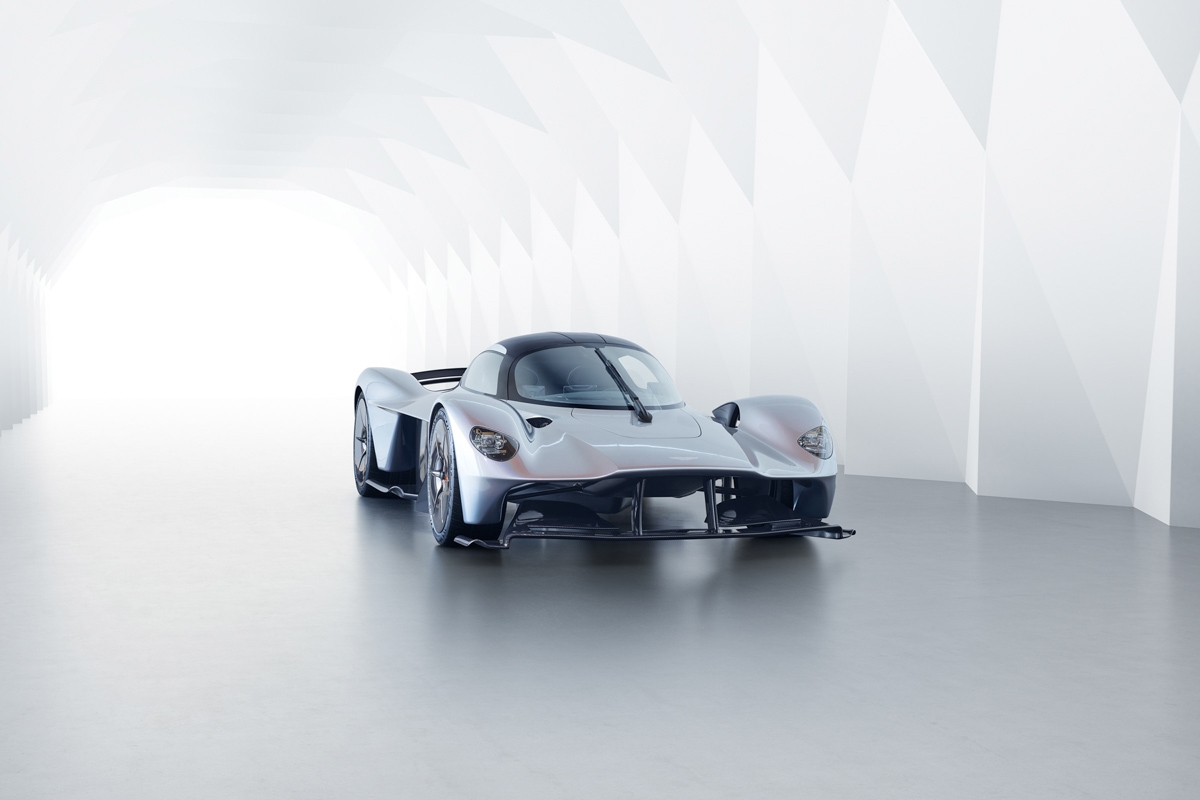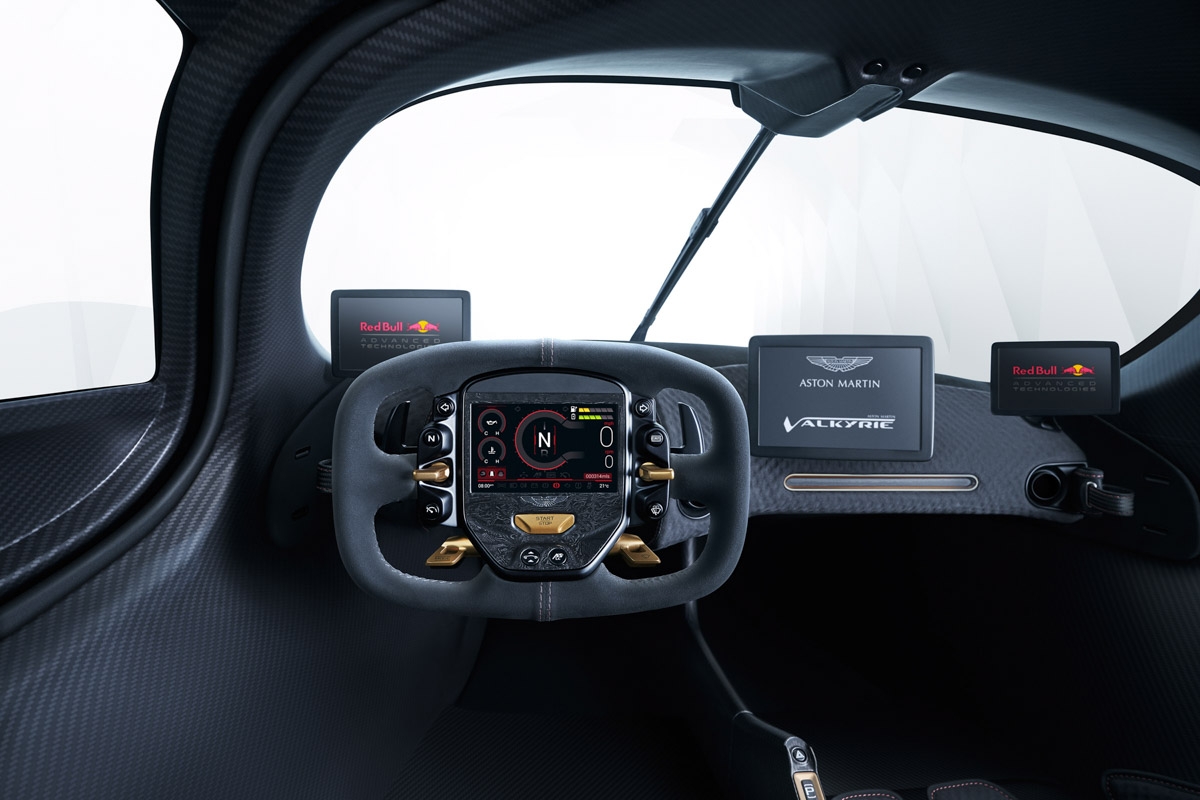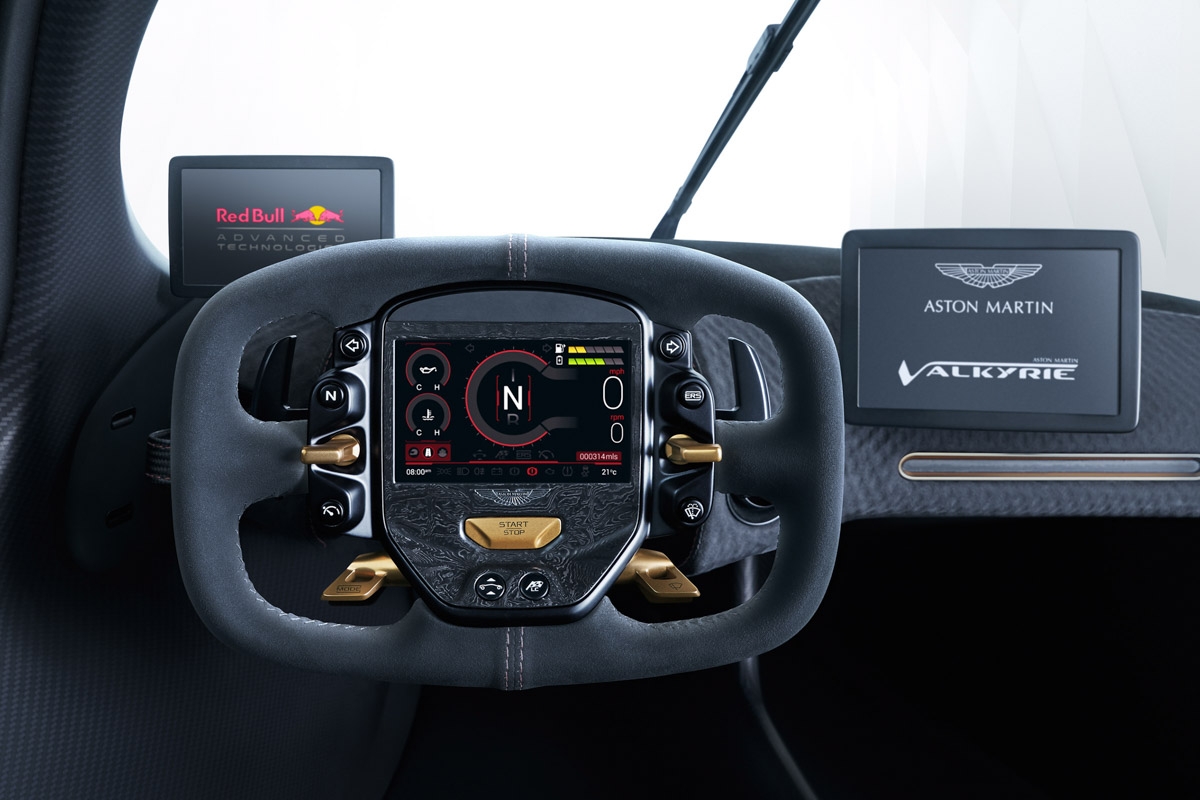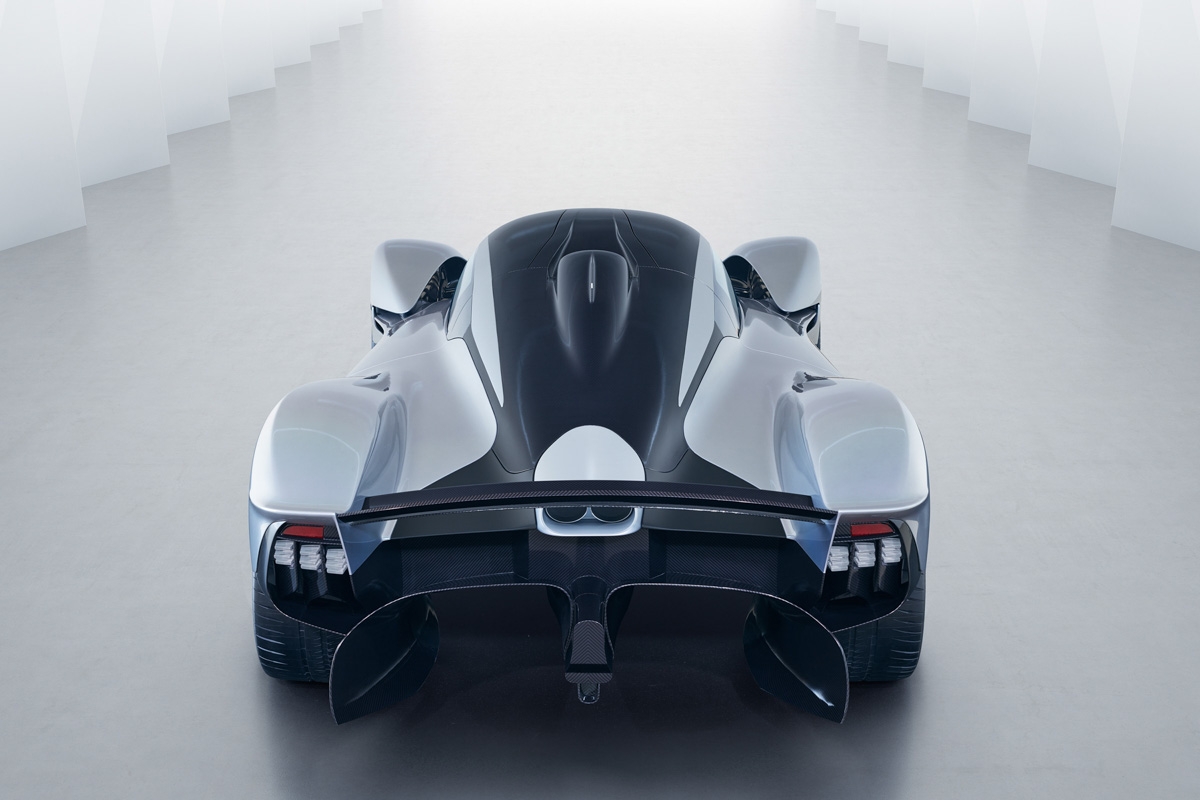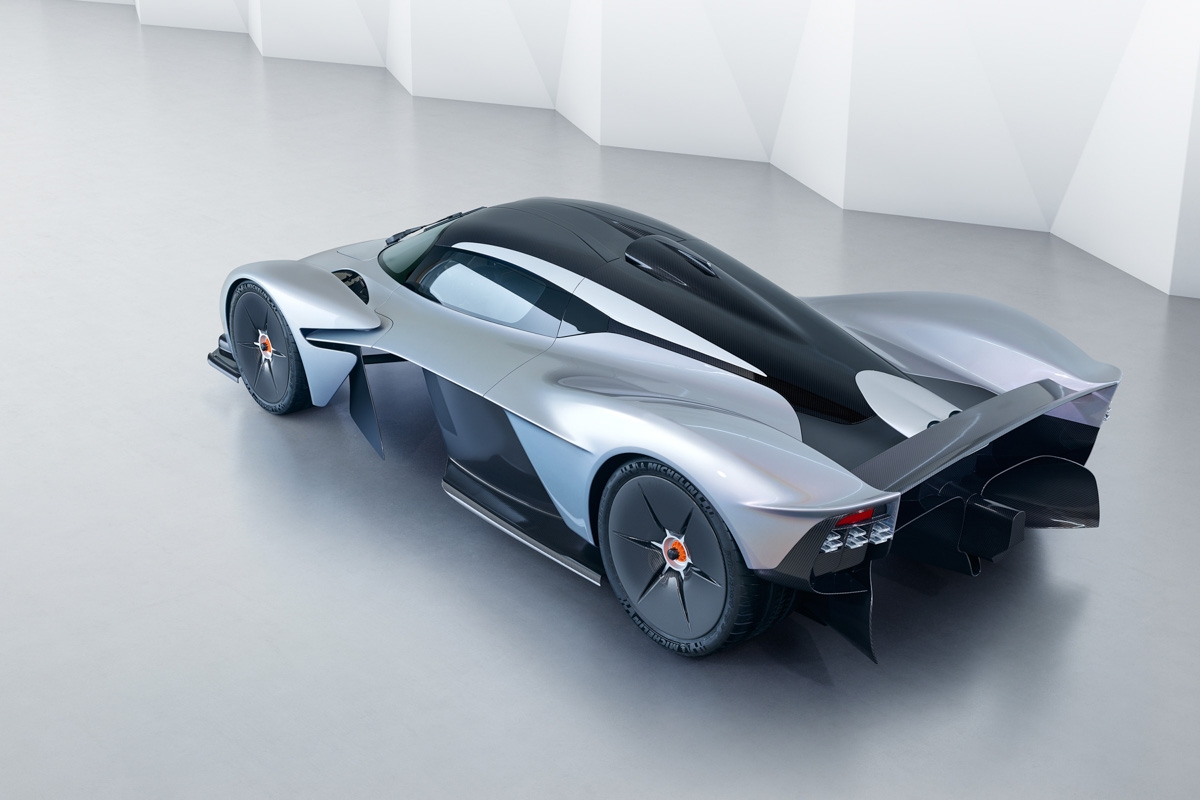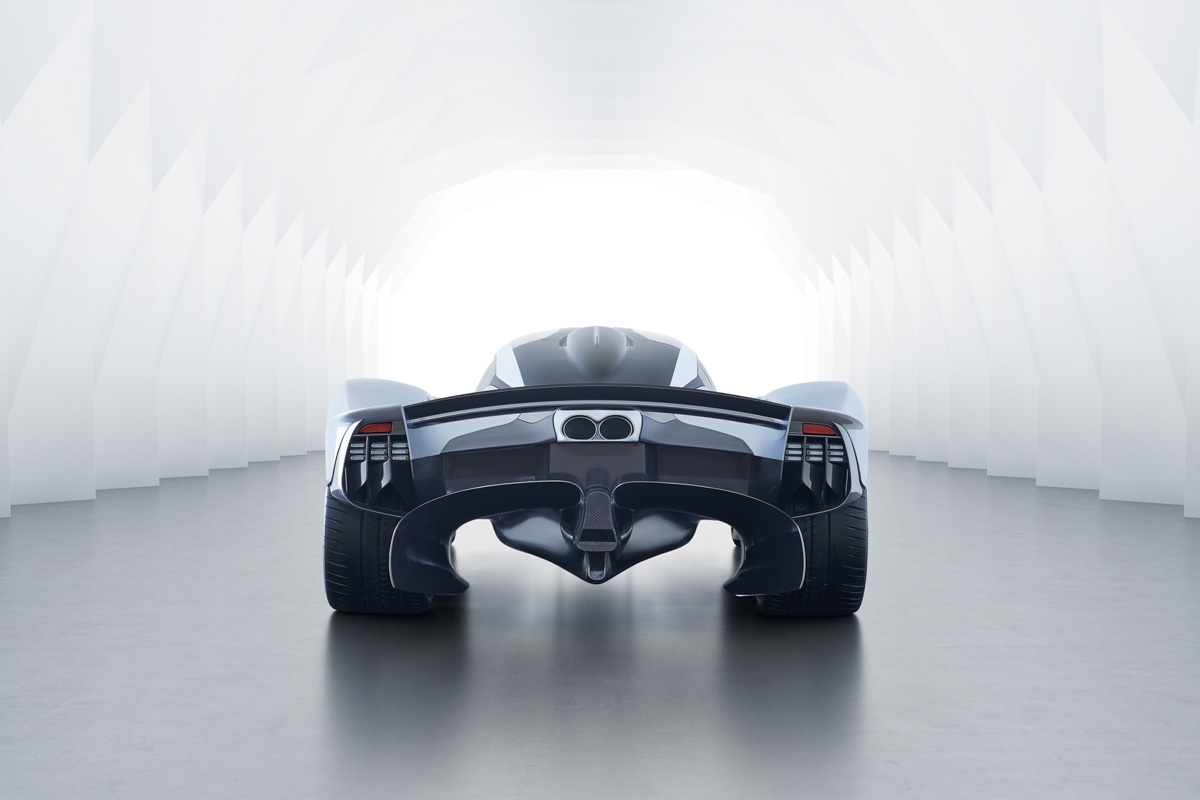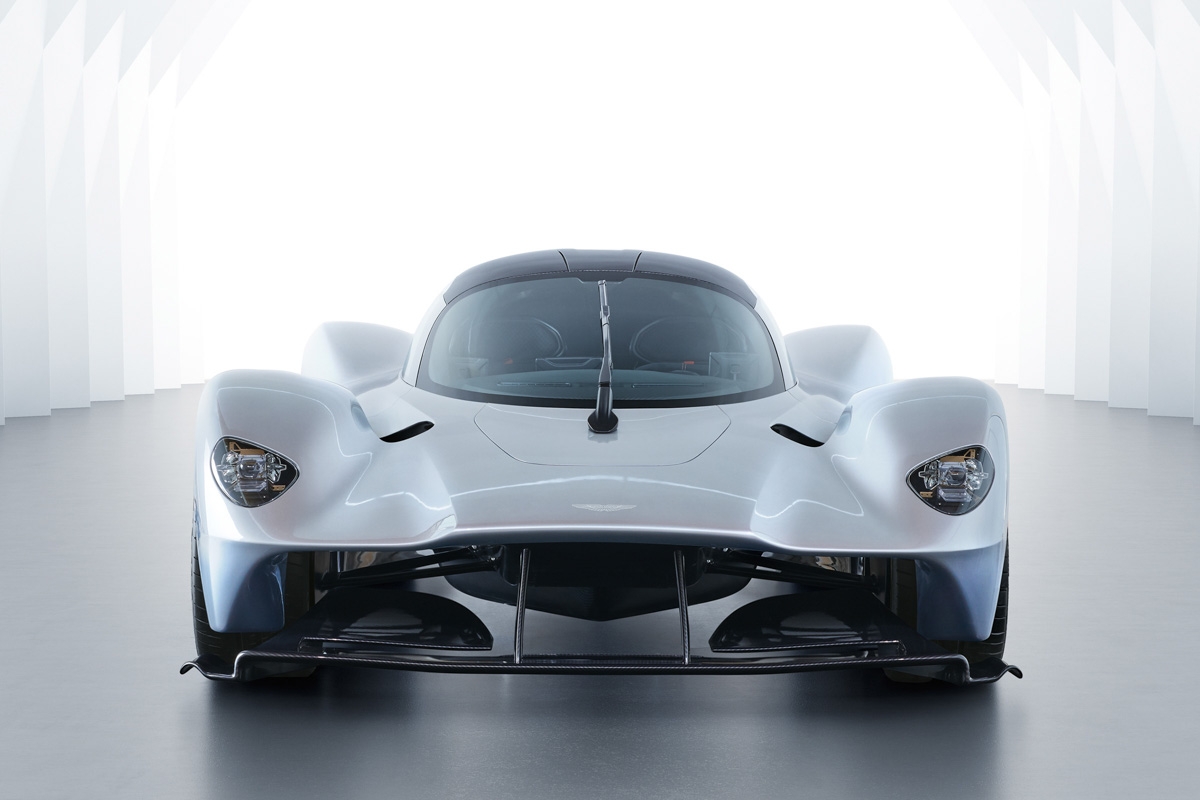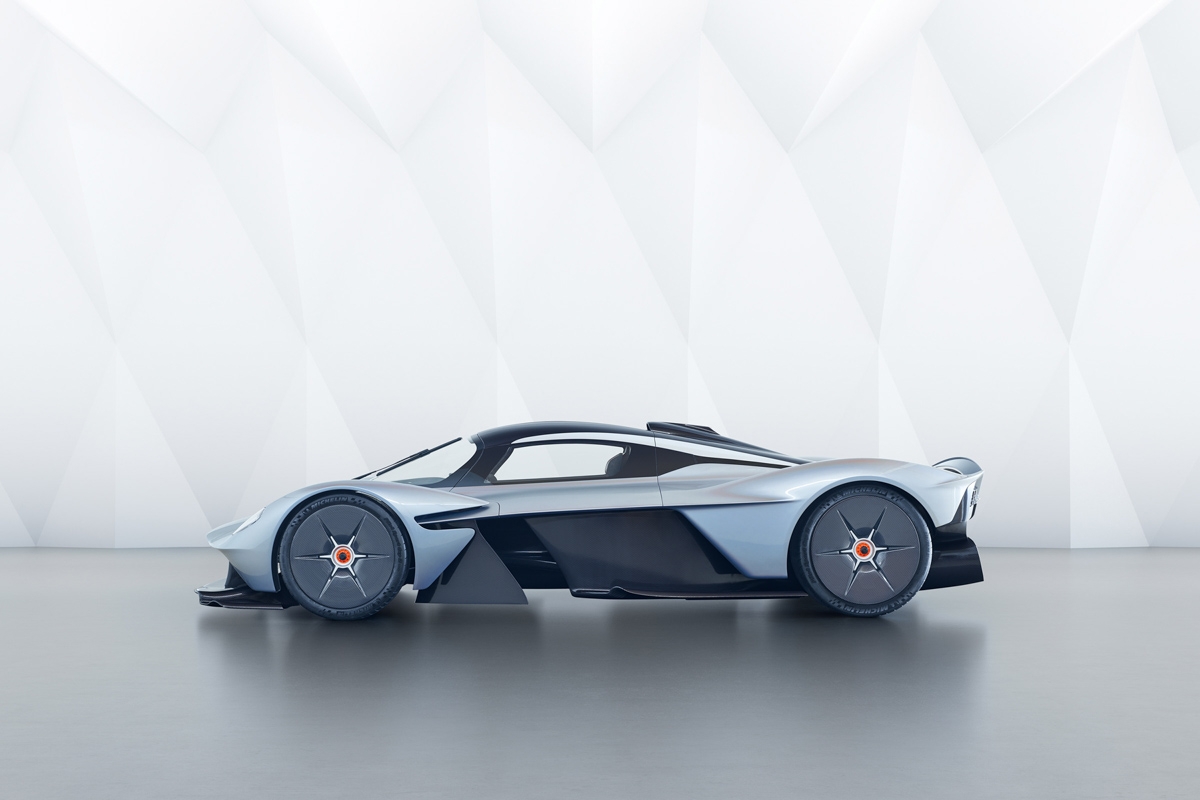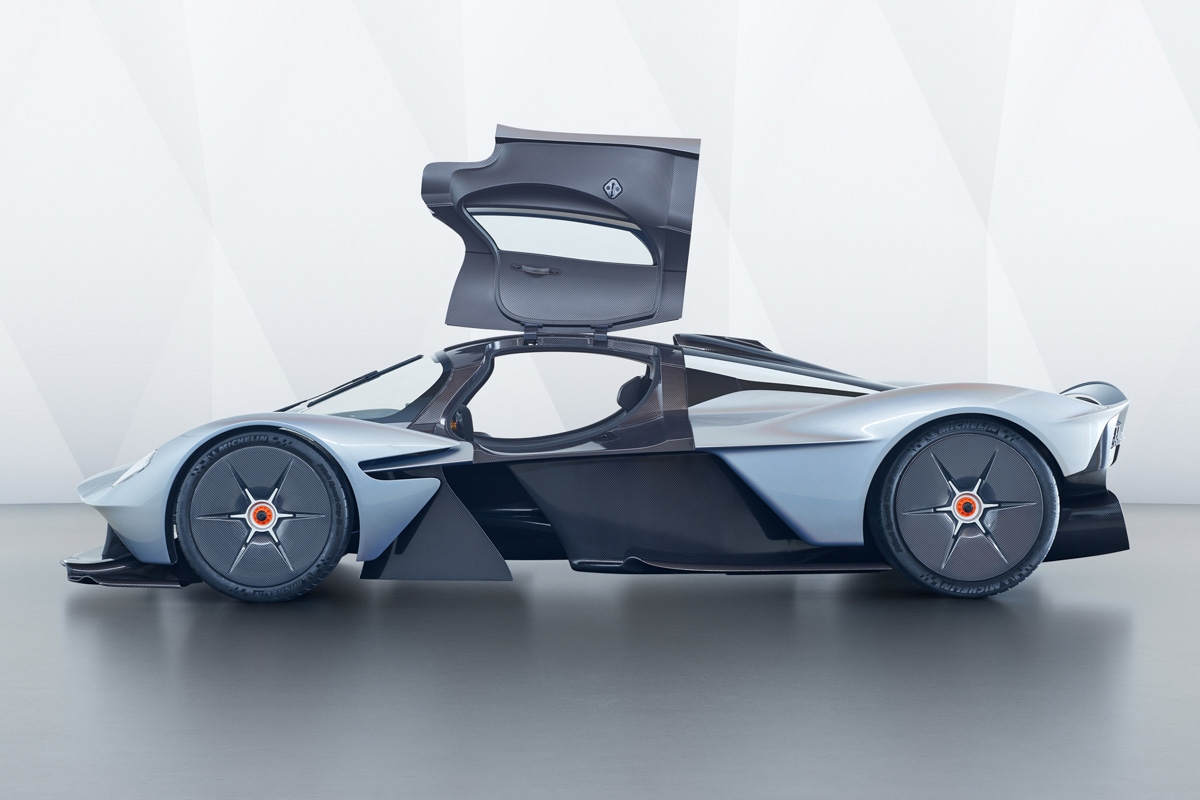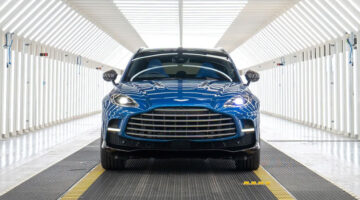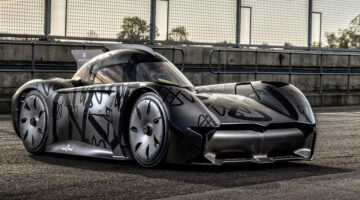Aston’s beaten AMG to the punch, just, with the first customer Valkyrie now complete and full-production officially underway
The Aston Martin Valkyrie has made it through its exhaustive development program, with customer cars now in production and the first unit complete and ready for delivery to its very patient owner in the next couple of weeks.
When Aston Martin and Red Bull introduced the AM-RB 001 all the way back in 2016, the supercar world was a very different place. So after a name change, a technical break between its two main stakeholders, a change of leadership within Aston Martin, ditching the Le Mans program that inspired the car and five years of arduous development work in the public eye, not counting the time spent before its public reveal, well, it’s been a journey.
The good news is that for owners, all this waiting is nearly over, and given the huge technical challenges needed to be overcome, the fact this pioneering hypercar program has reached the public roads at all is cause for lots of celebration for the team at Aston Martin.
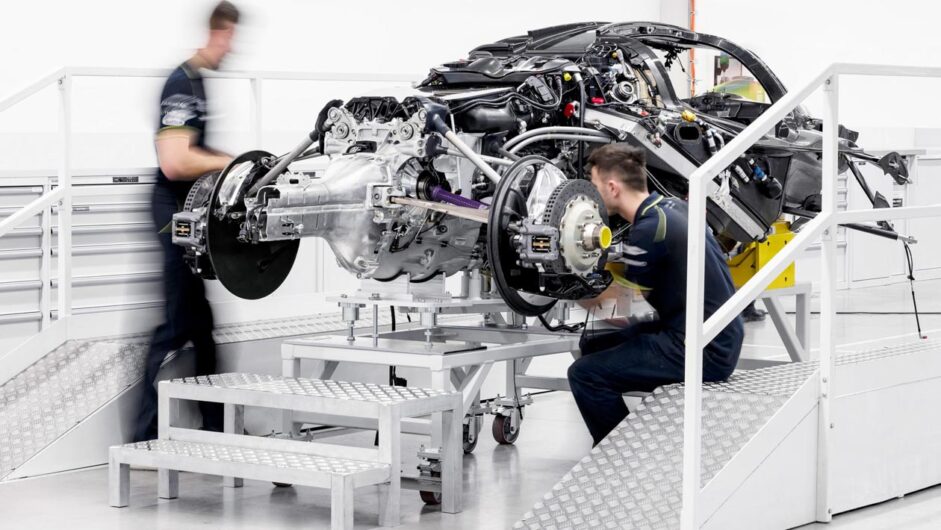
> GMA T.50 commences body-on testing – XP2 is go
Production of the Valkyrie will be based at Aston Martin’s Gaydon HQ, with a dedicated team assembling the 150 coupes by hand. Each example takes over 2000 man hours to complete, and once finished all units will undergo a full track-test at Silverstone before delivery. Coupe production will be followed by production of the Valkyrie Spider (85 units) and track-only AMR Pro (40 units), which will commence next year after production of the coupe is complete.
The price for the road-going Valkyrie will be somewhere between $2.7m and $4m, a lot of money, yes, but perhaps seen in context of the crazy hypercar market, is around the price of a Ferrari Enzo.
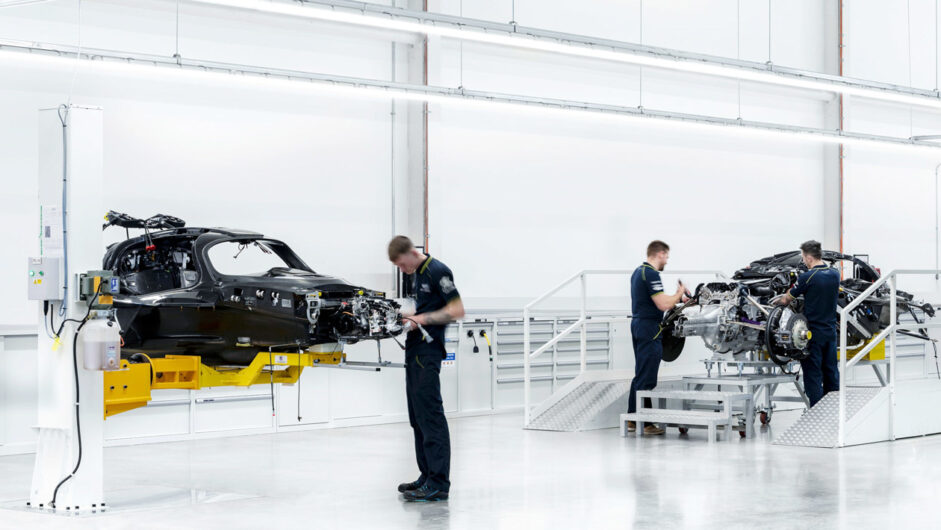
The Aston Martin Valkyrie: the story
The Valkyrie was conceived at a time when Aston Martin and Red Bull Racing were partners and not opposing race teams in the F1 paddock, yet the partnership has continued despite the very different circumstances. This application of cutting-edge F1 tech was blended in the Valkyrie’s development alongside a desire to go racing at Le Mans in the LM Hypercar class, but with new leadership under Lawrence Stroll, this exercise has been cancelled in order to focus on the F1 team.
Yet this F1 connection is arguably more important, because it will go head-to-head with the Mercedes-AMG Project One – a pet project of former AMG boss (and now Aston Martin boss) Tobias Moers that has seen its own delays and setbacks in the development phase due to its directly F1-derived powertrain.
Chassis and aerodynamics
The Valkyrie is a two-seater supercar but the occupants will sit with their feet above their hip point – just like an F1 or LMP car. It’s made from carbonfibre, the composition and thickness of which (it varies depending on strength requirements) is defined by Newey and Red Bull Advanced Technologies.
The huge power output will come from a high-revving, normally aspirated V12 with KERS, that’s completely bespoke and shares nothing with the current Aston Martin V12 we know from the likes of the Vanquish. Nor is it related to the One-77 or Vulcan engines.
Suspension is inboard, pushrod operated and said to be incredibly sophisticated. Expect an active suspension system, although Red Bull Advanced Technologies and Aston Martin remain very tight-lipped about the exact make-up of the system.
Freed from the constraints of racing regulations Newey has devised a car that looks set to instantly make cars like LaFerrari, P1 and 918 Spyder seem archaic, heavy and, unbelievably, rather slow. It has downforce levels similar to an LMP1 car, and will achieve 4.5 G of lateral force (on slicks rather than the Cup 2 road tyres, we presume).
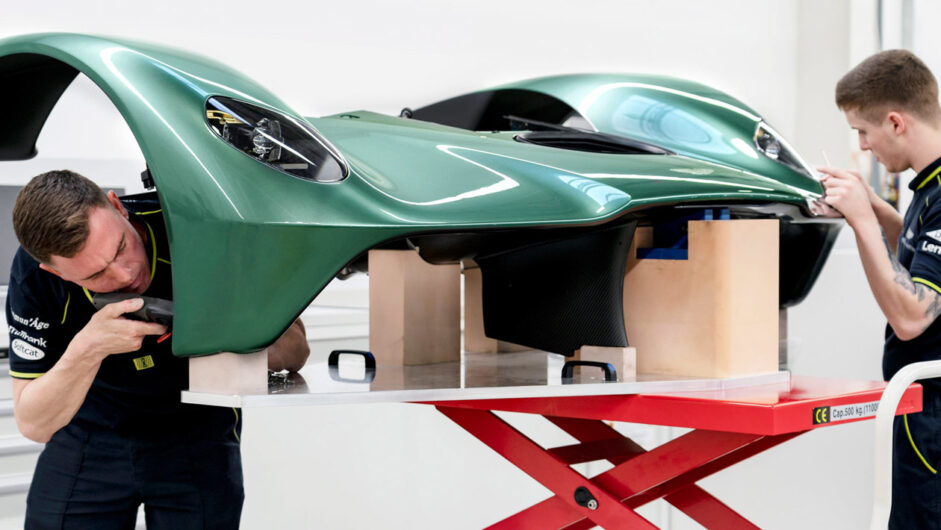
While downforce has always been the core design deliverable, the team also had the challenge of finishing the Valkyrie with the sort of details befitting an Aston Martin car of this price tag. One example is the front badge. Deemed too heavy when made from the traditional enamel, Aston Martin has instead designed a chemical-etched aluminium badge just 70 microns thick. At about 30 per cent thinner than a human hair, the badge is then covered in a thin layer of clear lacquer to protect against the elements.
The headlights are also very specialised and are 30 to 40 per cent lighter than other units available to Aston Martin. The team stripped back the components found inside a normal headlight, directly mounting the essential elements to a single aluminium frame and removing all the shrouding one would usually see in a headlight unit.
Aston Martin’s former creative director of exterior design, Miles Nurnberger, has said: ‘I would say we’re around 95 per cent of the way there with the exterior design. Much of what you see is actually the structure of the car, so this had to be signed off relatively early in the project. The remaining areas of non-structural bodywork are still subject to evolution and change as Adrian [Newey] continues to explore ways of finding more downforce.’
The Valkyrie interior was perhaps the biggest challenge, though, as designers had to work within the strict packaging allowances dictated by the carbonfibre tub. Like Ferrari did in its LaFerrari, Aston Martin has mounted the seats directly to the tub to save space, while all the controls have been placed on an F1-inspired steering wheel.
The Valkyrie also continues Aston Martin’s tradition of names beginning with V – such as Vanquish, Volante and Vantage. Reichman said: ‘Aston Martin model names have deep meaning. They need to inspire and excite. The Aston Martin Valkyrie is an incredibly special car that demands an equally remarkable name; an uncompromising car that leaves nothing in reserve. The connotations of power and honour, of being chosen by the Gods, are so evocative, and so pertinent to a car that only a fortunate few will ever experience.’
Powertrain
Aston Martin has drafted in Cosworth to help develop the hybrid powertrain. The British outfit has been tasked with building the engine and admitted that the Valkyrie will feature the most powerful naturally aspirated road car engine yet, with 1000bhp. Sourced from a 6.5-litre V12 augmented by a ‘lightweight hybrid battery system’, the electric element is expected to be configured in a KERS-style boost system akin to those equipped in Formula 1 cars.
The engine is capable of producing its peak 1000bhp output at 10,500rpm, 545lb ft of torque at 7,000rpm and will hit redline at a rather ridiculous 11,100rpm. Aston Martin says that the majority of the engine’s internal components are machined from solid material, including F1-spec pistons, making for an exceedingly light engine at just 206kg – Cosworth’s 3.0 litre V10 F1TM engines weighed 97kg, if scaled-up to 6.5 litres they would weigh more, at 210kg. As if 1000bhp wasn’t enough, performance figures will be further boosted by a battery hybrid system, something that Andy Palmer speculated would add around 130bhp to that figure.
One of the many deliverables with the Valkyrie is a 1bhp per kg power-to-weight ratio, meaning that we expect a weight of around 1130kg if Aston Martin and Red Bull hit their target.
Aston Martin hasn’t been shy in its search for project partners. Ricardo is engineering a bespoke seven-speed paddleshift gearbox, while Rimac is developing the hybrid battery system. Construction of the carbonfibre Monocell will be taken care of by Multimatic, Alcon and Surface Transforms will supply the brakes, Bosch will deliver the ECU, traction control and ESP systems and Wipac is handling the full LED head and tail lights.
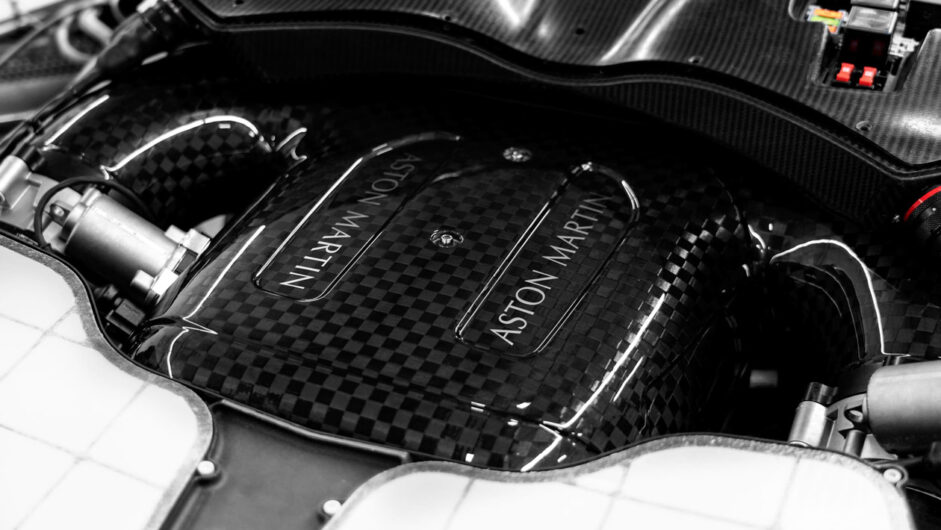
Aston Martin hasn’t been shy in its search for project partners. Ricardo is engineering a bespoke seven-speed paddleshift gearbox, while Rimac is developing the hybrid battery system. Construction of the carbonfibre Monocell will be taken care of by Multimatic, Alcon and Surface Transforms will supply the brakes, Bosch will deliver the ECU, traction control and ESP systems and Wipac is handling the full LED head and tail lights.
Adrian Newey says of the technical partners supporting the AM-RB 001 project: ‘Much like Formula 1, designing, engineering and building a car like the AM-RB 001 is a massive team effort. To achieve great things you need to surround yourself with the best people.
‘Experience, creativity, energy, diligence and perfectionism are absolute must-have qualities in every area of the project. Having great technical partners such as those working with us is both reassuring and motivating. Together we aim to produce an innovative piece of engineering art.’
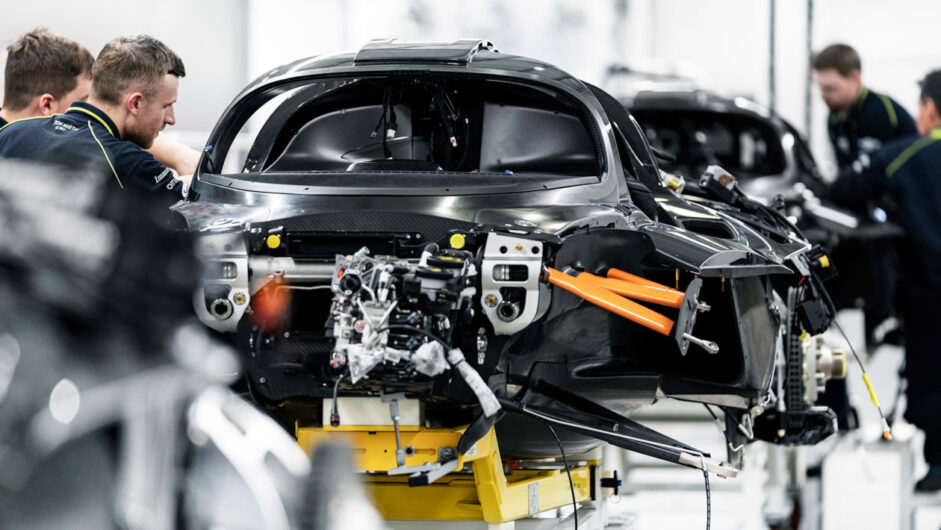
Michelin announced as Valkyrie tyre partner
A car sure to be among the most extreme ever made available for the road needs tyres to suit, and at the Geneva motor show Michelin was confirmed as the official tyre partner for Aston’s hypercar.
Surprisingly, the tyres chosen for the Valkyrie aren’t some entirely new type designed to Adrian Newey’s exacting requirements, but a set of Michelin Pilot Sport Cup 2s – a tyre we’re more than familiar with from dozens of other sports and performance cars.
There’s a good reason for that, of course: there’s currently no better tyre for high-performance road and track work, but the Valkyrie is sure to put the Cup 2s to their greatest test yet. Up front, 265/35 R20 rubber will be used, and 325/30 R21 at the rear – a staggered set-up common to mid-engined supercars – and Aston Martin has kept unsprung weight to a minimum by wrapping the rubber around 20×9.5-inch and 21×11.5-inch magnesium centre-lock wheels.
This article originally appeared at evo.co.uk
Copyright © evo UK, Autovia Publishing

